Author Archives: Josh
Two Long Lost Lifers
Falling behind on this blog seems to be the new normal for me. Despite the lack of new content, the birding has continued on. There have been some pretty monumental moments, in fact. Since life continues to get busier with family, responsibilities, and other projects, my postings will now probably just be limited to new life bird experiences. New birds have come at a slow, yet steady drip. There are a few I need to catch you up on. Let’s start with two new birds I got this past fall.
In late September, I traveled home to northern Minnesota to attend the funeral of a family friend. It was, of course, Jaeger season down at Wisconsin Point on Lake Superior at the time. So one morning on this unplanned trip, I went across the border to see if I could nab at least one of three possible Jaeger species for my life list. Luck would have it that there was a Hawk Ridge field trip that very morning to find Jaegers! Field trip leader Clinton Nienhaus graciously allowed me to merge into the group, and all of us got to enjoy this dark morph Parasitic Jaeger. It was a pretty cool experience to not only get a lifer, but to also see a brand new family of birds, complete with their own look and behaviors. Watching this Jaeger chase the Gulls was fun to witness.
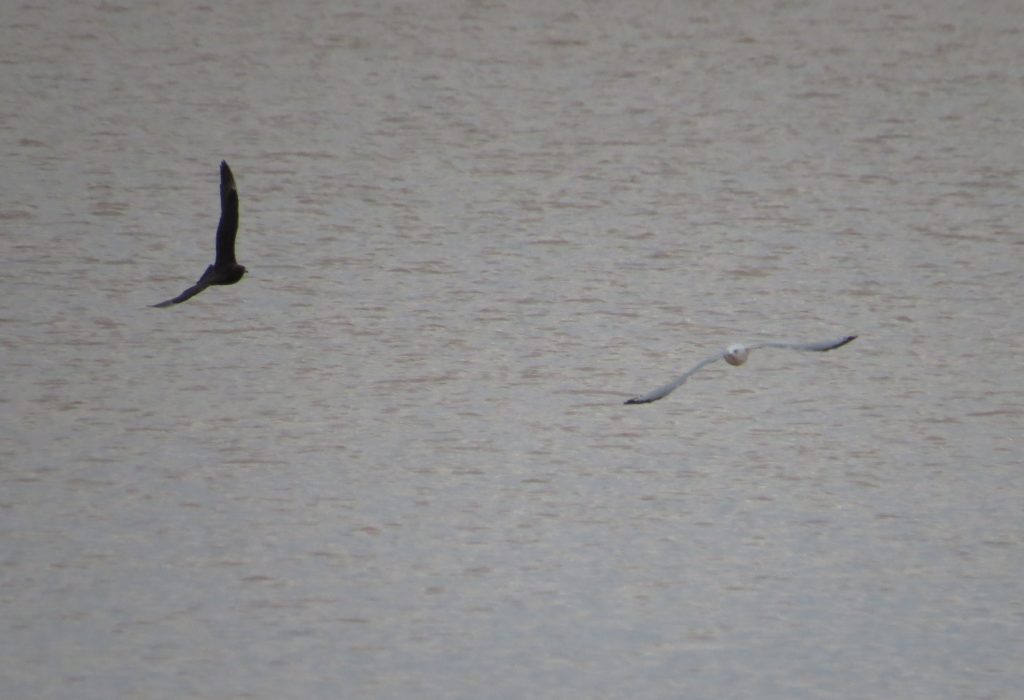
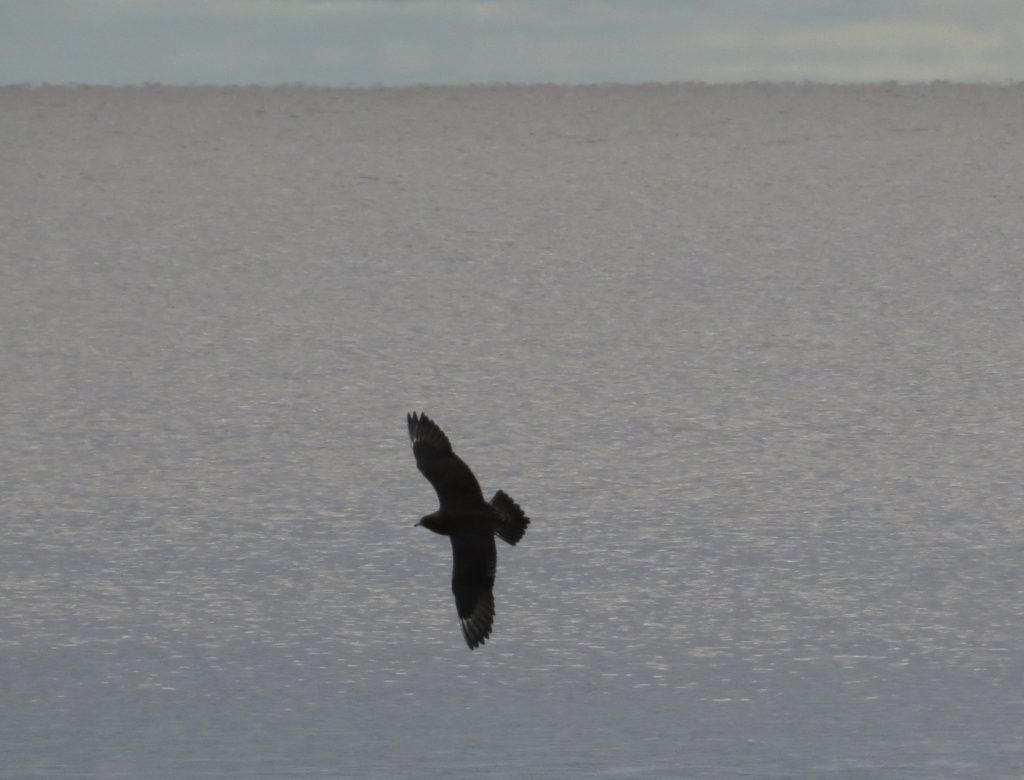
On November 25, 2017, it was me chasing the Gulls. A report came in of a Black-legged Kittiwake on the Mississippi River south of Cottage Grove at the far eastern edge of the Twin Cities. Since it was a life bird, I was compelled to make this chase which almost ended up being a dip. I arrived to find out the bird had been seen all morning up until 15 minutes prior to my arrival. After searching with dozens of other birders for an hour, I called it quits. I made it a third of the way home when I got the notice from buddy Pete Nichols that it had returned to loaf on the ice in the same spot it had been seen earlier. I had a decision to make: continue home or race back east. Well, I went for it. And thankfully, it was still there when I arrived. My timing couldn’t have been any better as I enjoyed it for all of 10 minutes before it flew away never to be seen again.
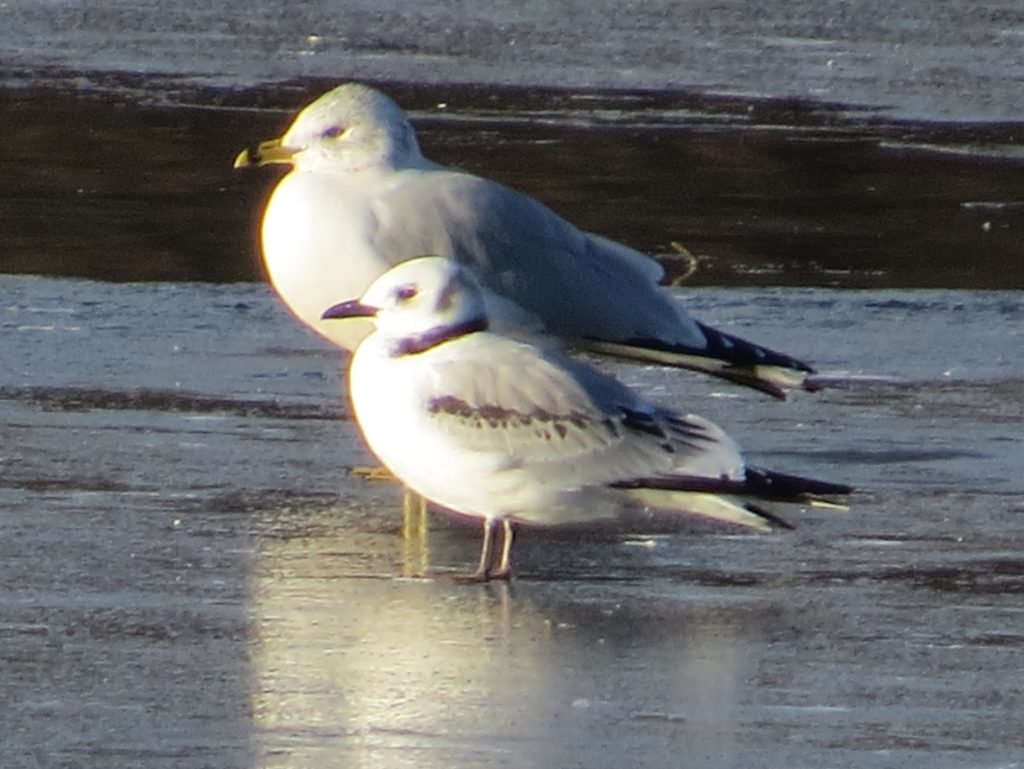
Unfortunately, Brad Nelson, Garrett Wee, and I did not have that same luck when we chased the state’s first record Tufted Duck this month, also on the Mississippi but down at Red Wing. Instead, here is a picture of a Tufted Titmouse from Frontenac Cemetery on that same trip. It was a lifer for Brad, a state bird for Garrett, and my second only sighting of one.
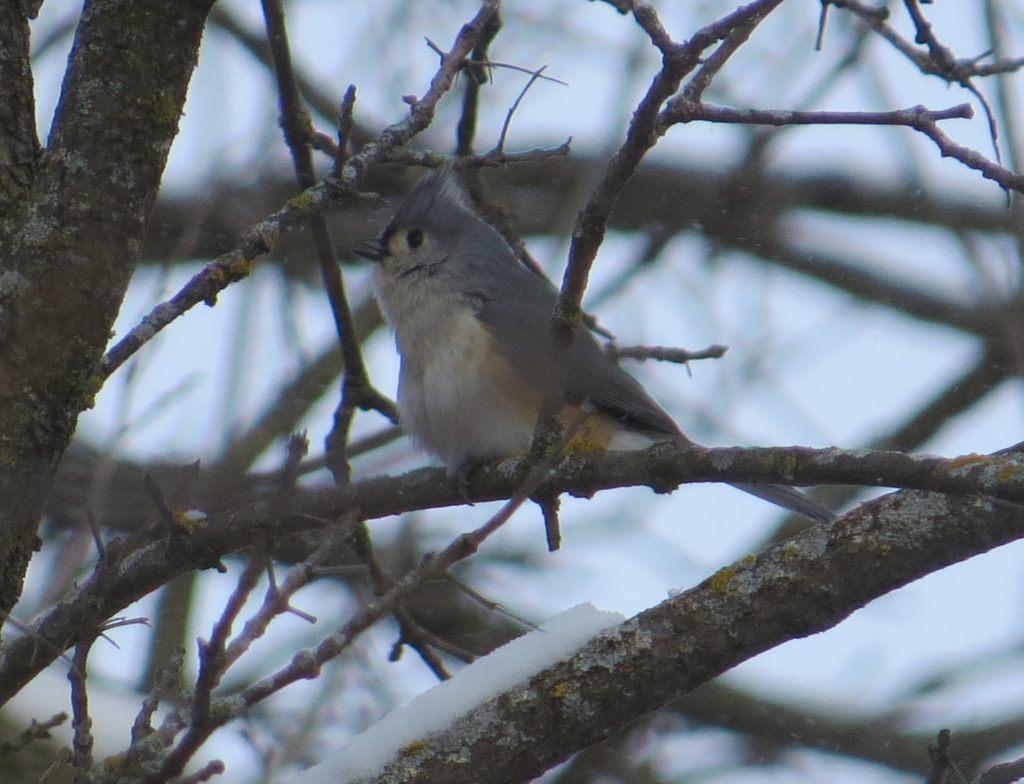
The next post is a lifer of epic proportions that I cannot wait to share. Second only to the Greater Sage-Grouse adventure, this was the best birding adventure I’ve ever been on with Evan.
An Even Dozen
Anyone who has been keeping up with the sporadic posts of this blog lately knows that my interest in local birding has intensified. Specifically I’ve been working hard on growing my Kandiyohi County list. My self-imposed mission for the year was to try to pass the legendary Bob Janssen. Doing so would require me to get from 244 to 251 in a single year–a daunting task for sure, but one that I accomplished by mid-summer. The first six birds (245-250) did not come easily and were the result of a lot of effort, both as an individual and as a part of different groups. The goal bird, #251 (Common Gallinule), on the other hand, was a gift from the efforts of another birder. Little did I know at the time, but gift birds would be the theme for the second half of the year which would hold nearly as many new birds for me as the first half! The last post featured the next such gift, #252, the long sought-after Blue Grosbeak.
#253
That Blue Grosbeak was found in the midst of a major Red Crossbill irruption that was engulfing western Minnesota. In the days leading up to the Blue Grosbeak, Randy Frederickson and I had been searching high and low for one in our county. At the time of the Blue Grosbeak discovery, I was on a camping trip to Sibley State Park with my brother and his family. Twice I had to ditch the campsite and my family to chase county birds–once to look for Red Crossbills Joel Schmidt found and the other time to nab the Blue Grosbeak. Though unsuccessful on the Red Crossbills that day, we knew from reports in the surrounding counties that our Red Crossbill moment was imminent. It was like being at a Twins game and waiting for the wave to overtake your section. We did not have to wait long. Just as I was literally towing the camper back home, Randy texted saying he found 4 of the “red bastards” on a golf course in the southwestern part of the county. The Red Crossbill had eluded Randy for nearly three decades. I didn’t have nearly as long of a wait, but I was still in a hurry. I didn’t even bother unhitching the camper at home as I went straight from Sibley to the Raymond golf course. When I arrived, I called Randy to find out where he was on the course which was not in use at the time due to flooding from heavy rains. As we were talking, Randy was approached by the groundskeeper who was questioning what he was doing. The guy turned out to be rather friendly and even drove his golf cart to the clubhouse to pick me up and bring me out to where Randy was! Not long after, he did the same thing for Ron Erpelding. And the three of us enjoyed our second new Kandiyohi bird in as many days.
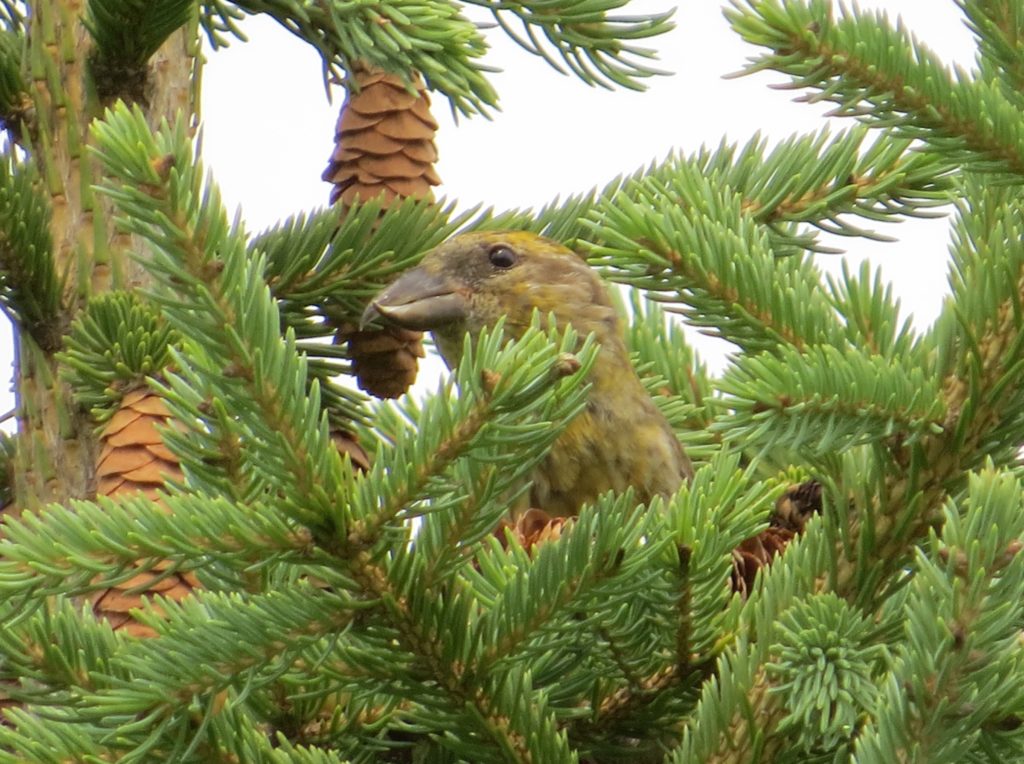 The Red Crossbill irruption was/is nothing short of incredible. This was my first sighting of many just within our county alone. I had several personal finds of this species in the following months, including finding a flock while driving highway speeds and a flyover flock while walking out to my mailbox!
The Red Crossbill irruption was/is nothing short of incredible. This was my first sighting of many just within our county alone. I had several personal finds of this species in the following months, including finding a flock while driving highway speeds and a flyover flock while walking out to my mailbox!
Here is a pair from a flock of about 20 found by Steve Gardner at MinnWest Technology Campus in Willmar.
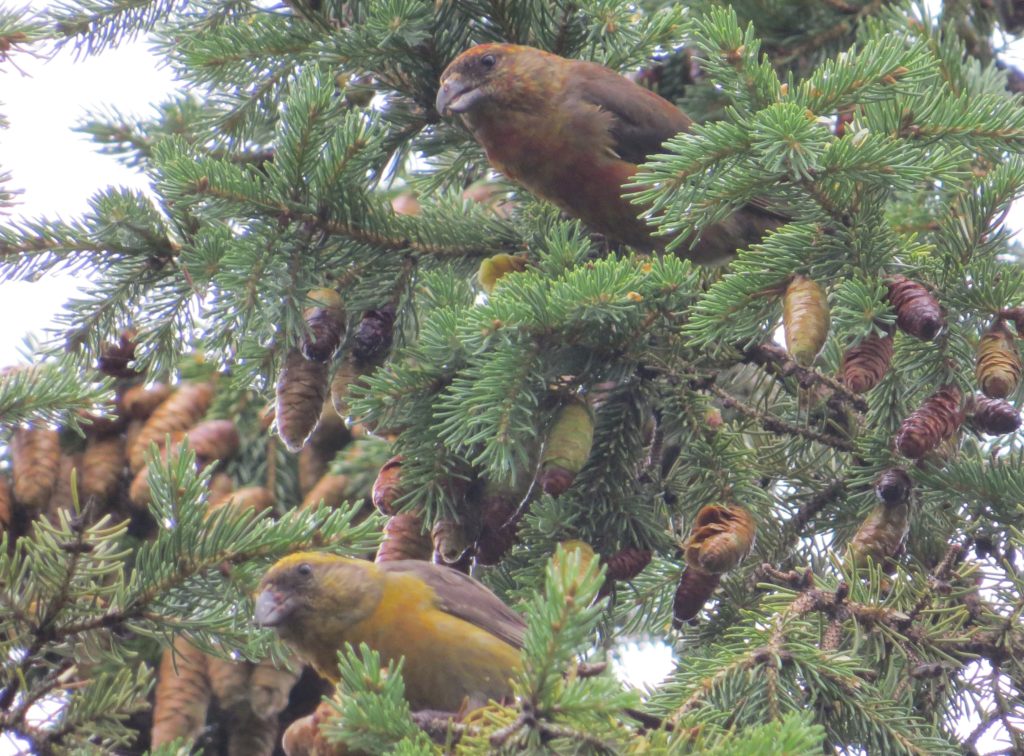 This next picture shows a Red Crossbill that I was disappointed to find this past October. I was actually looking for the other regular Minnesota Crossbill species which was also showing signs of irrupting. Birding can be strange. Somehow I ended up with the much more difficult Crossbill species before getting the supposedly much easier White-winged variety. I was the only serious Kandi birder who still lacked this species. I desperately wanted to see wing bars on this bird.
This next picture shows a Red Crossbill that I was disappointed to find this past October. I was actually looking for the other regular Minnesota Crossbill species which was also showing signs of irrupting. Birding can be strange. Somehow I ended up with the much more difficult Crossbill species before getting the supposedly much easier White-winged variety. I was the only serious Kandi birder who still lacked this species. I desperately wanted to see wing bars on this bird.
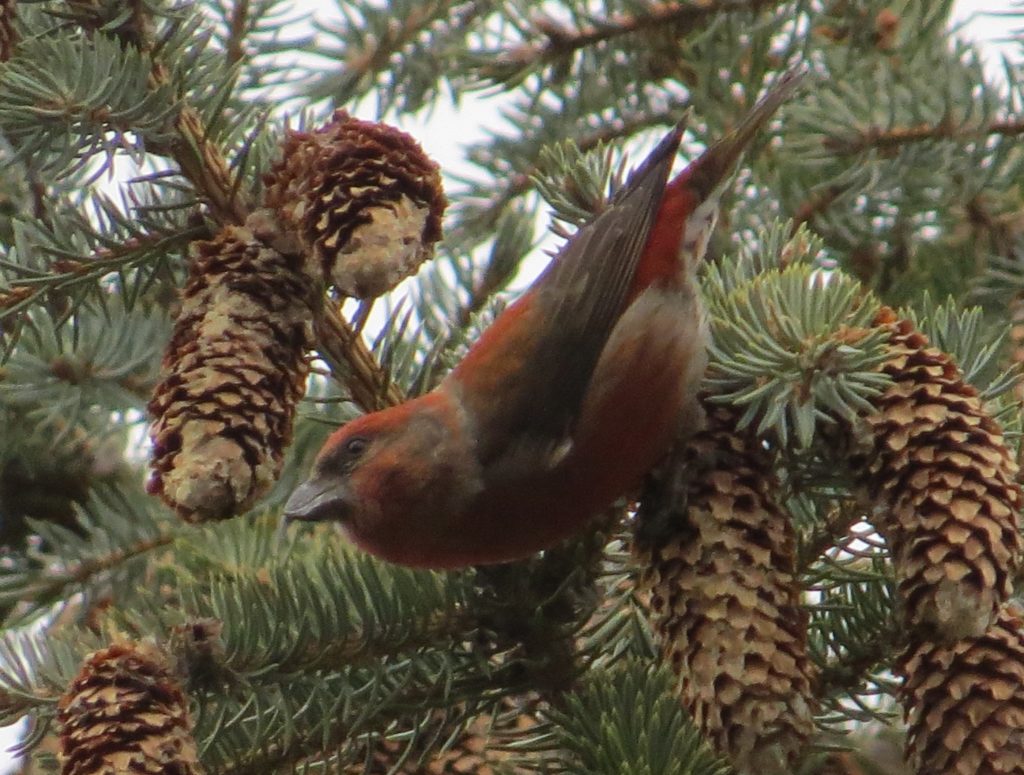
#254
During late summer and early fall, I managed to get an Eastern Screech-Owl in two neighboring counties but not in the county where I wanted it most. Both birds were found at ordinary farm groves and had me rethinking my whole strategy for finding this species in Kandiyohi County. I always thought that I would have to search in the northern part of the county which is more heavily wooded and not as agricultural. Now, though, I reasoned that if I simply put in the reps of going to farm groves in the southern half of the county and played recordings, I’d eventually connect with a Screech. As luck would have it, I never had to enact that plan. In early November some junior high students were wondering about the ID of a “small owl in a tree cavity with pointy ears,” a bird they had discovered while hunting squirrels in their patch of woods. Unbelievable! Leave it to the sharp eyes of some young kids to finally–finally!!–get me on one of my most-wanted birds for the county. An added bonus was that it was gorgeous red-morph. Seeing this color Screech was another major birding goal of mine for 2017. Because of circumstances surrounding this bird, I am keeping location details under wraps.
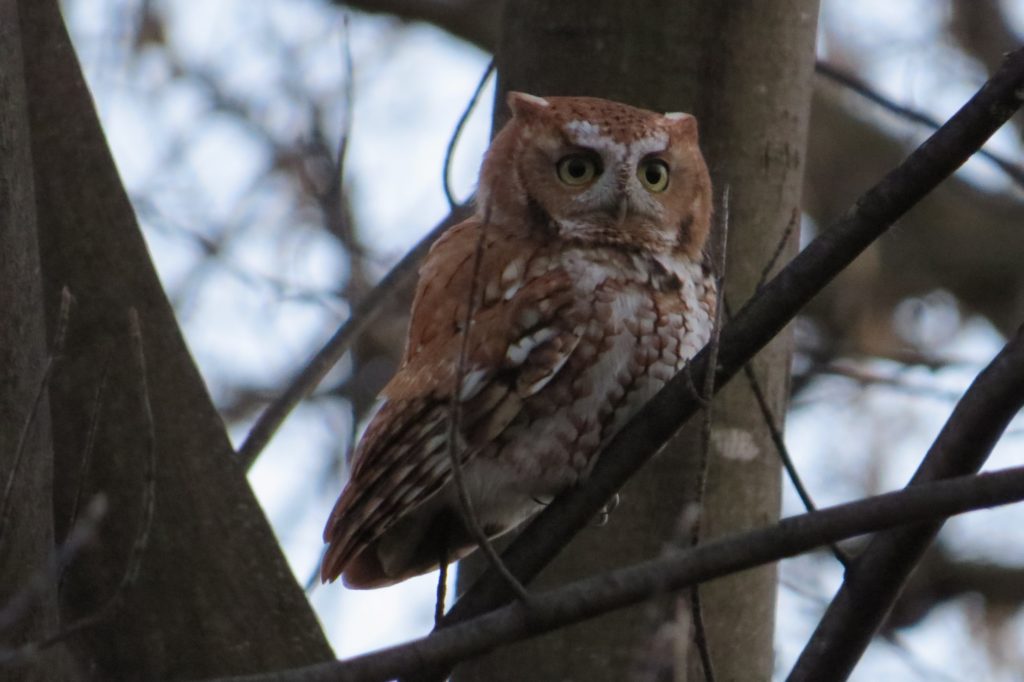
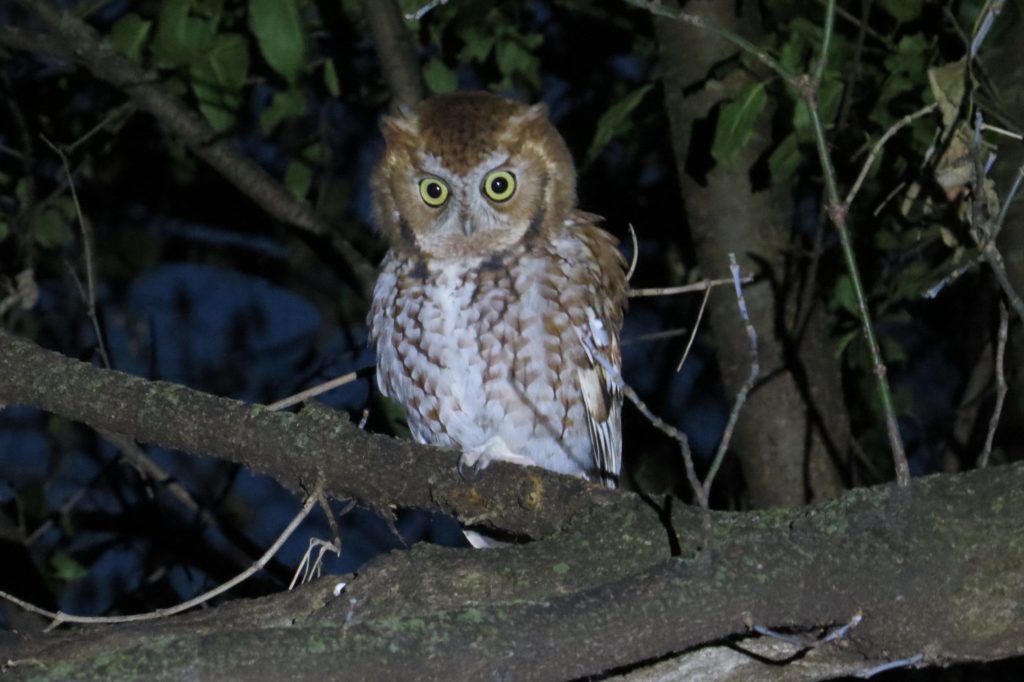
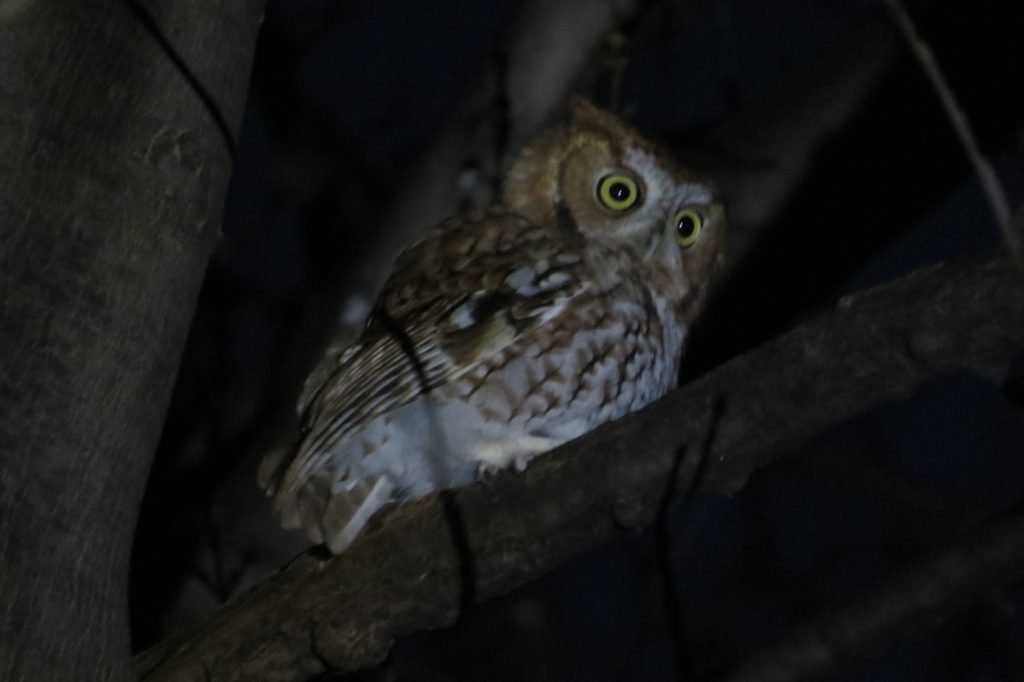
#255
The Screech was an incredible high point for me, but this was not the time to rest and take it easy. As I mentioned earlier, White-winged Crossbills were irrupting in northern Minnesota, most prominently along the North Shore of Lake Superior. I have wanted to see this species in Kandiyohi County for a very long time. It turns out there was a flock in Willmar the very first winter I started birding in 2012. Unfortunately I was not connected with local birders at the time and therefore had no idea about these Crossbills until long after the fact. I was excited to learn that some were seen on last year’s Christmas Bird Count at the MinnWest Technology Campus in Willmar, the very same place they were in 2012. I visited the site that very day but had no luck. I continued to make visits there throughout last winter only to get the same result. This year was different, though. Based on reports, I knew I had a good chance this year. And since I was the only serious Kandi birder without the species, I knew finding it would depend on me alone. So once again, I made several trips this fall to the same small stand of Spruce trees where this species tends to show up. I was undaunted by my misses because of the positive reports out of the north. Then, finally, a mere four days after getting my Screech, I walked to the same stand of trees at MinnWest and instantly had a flock of Crossbills fly over my head and land in a nearby tree. I thought they might be Reds, but I had to get my eyes on them to be sure. This proved difficult since the 40+ birds were buried in Spruce tops. Finally one popped out to the end of a branch. Wingbars!!!
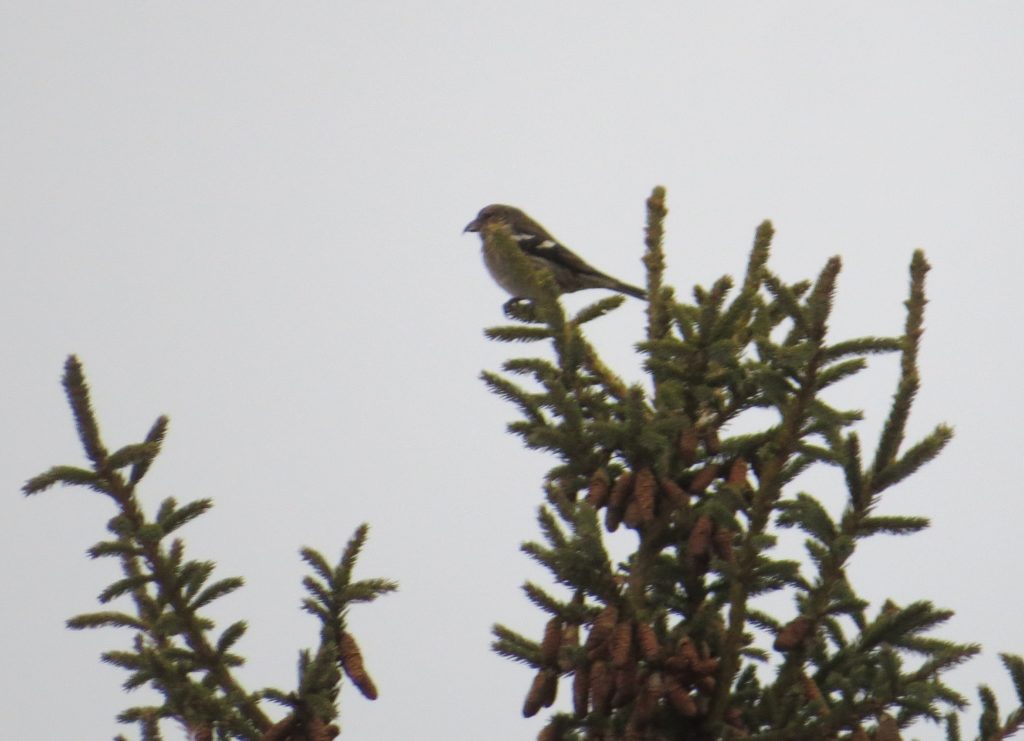 Getting this DIY county lifer was incredibly efficient and felt amazing. I enjoyed these birds for about a half hour before heading home. It was one less bird for which I was on my own.
Getting this DIY county lifer was incredibly efficient and felt amazing. I enjoyed these birds for about a half hour before heading home. It was one less bird for which I was on my own.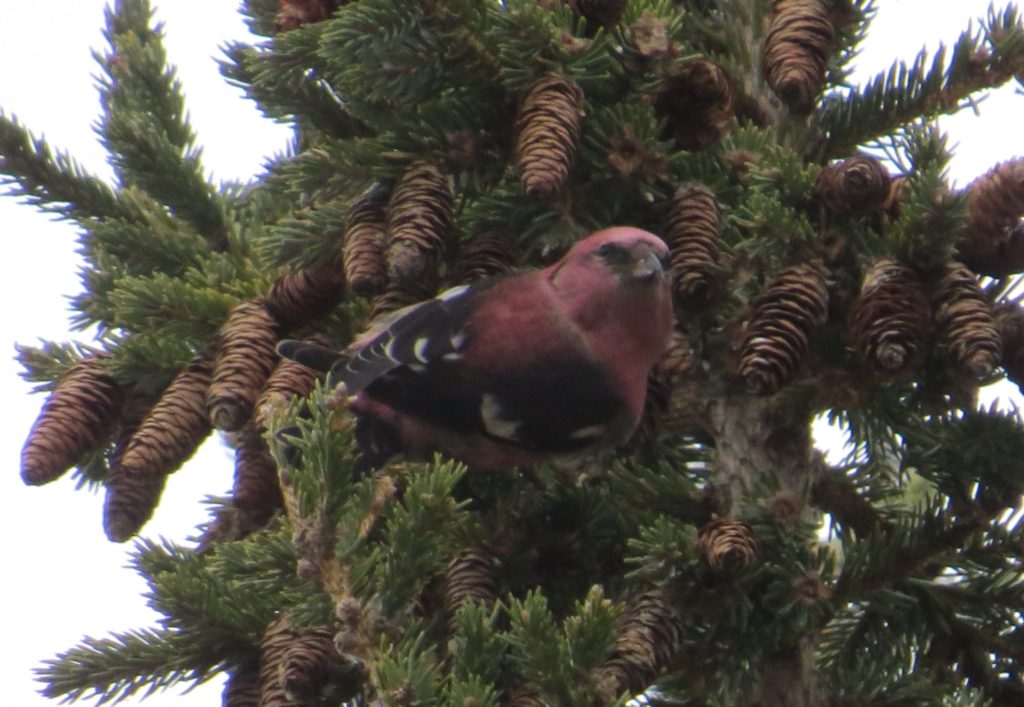
#256
This year I organized a campaign of nearly a dozen birders to do daily patrols of our county’s most probable location for sea ducks, Lake Lillian. The county has no official record of a Black Scoter, and a few of us needed Long-tailed Duck besides. While the Lake Lillian vigil did not produce either of these, Dan Orr did manage to find a Surf Scoter which was a county first just the previous year. By late November, Lake Lillian froze over and the 2017 sea duck season was over. Or so I thought. Green Lake by Spicer was still open. Green has held sea ducks before too, but its large size often makes it difficult to search as ducks can be far from shore. One Sunday morning in early December, Joel Schmidt drove through Spicer and noticed ducks on the water. Joel stopped to scan them and found the much coveted Long-tailed Duck many of us still needed! The action went down while I was in church, so I wasn’t aware of the flurry of activity until I looked at my phone after the service. By this point, everyone else had nabbed the bird, eBirded it, and packed their bags for home. I was on my own! Moreover, we had tickets for the community theater at 2:00 that afternoon. and our family hadn’t even had lunch besides. I was crunched for time. To add to the drama, I had ditched my family all day the day before to chase a life bird in the Twin Cities, and now I was headed out again. This was not good. Why do all the good birds come at the worst times? I had to go for this one. I knew I had time, but it would be tight. We hopped in the car and went, hoping to snag a county lifer and some fast-food lunch all before the curtain went up at 2:00. When I got to the Spicer beach/boat launch area I could not find it. It was sickening. I called Steve who had seen it an hour earlier, and he said he last saw it swimming north. I hopped in the car and raced to the next access point that direction, the Spicer city park. Then, thankfully, after a few minutes I was able to pick it out. Whew!
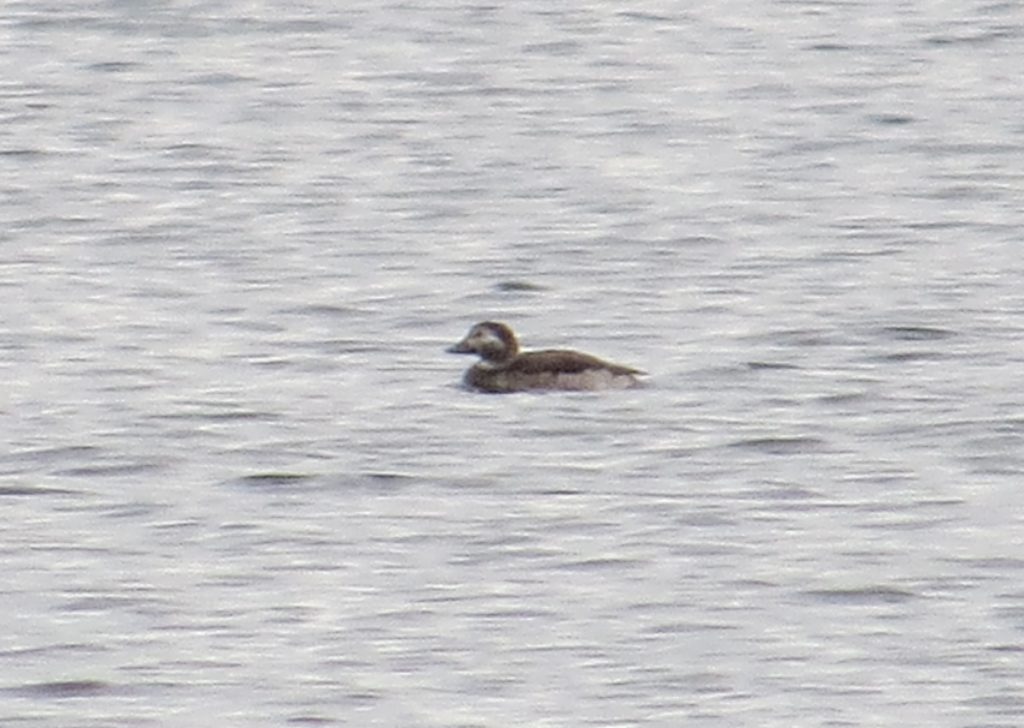
This year has been an unbelievable ride for my county birding. I was hoping to squeeze out 7 new ones with a lot of work, and I ended up getting that and more, much more. Here is a recap of the 12 new birds I ticked in Kandiyohi County this year.
#245–Short-eared Owl
#246–Townsend’s Solitaire
#247–Long-eared Owl
#248–Black-throated Green Warbler
#249–Connecticut Warbler
#250–Snowy Egret
#251–Common Gallinule
#252–Blue Grosbeak
#253–Red Crossbill
#254–Eastern Screech-Owl
#255–White-winged Crossbill
#256–Long-tailed Duck
This year has shown me the enormous potential of what can happen in one’s own backyard. Seeing rare birds is always fun, but they are even more special the closer they are to home. Seeing so many was incredible, and the year is not even over! With some luck and some effort, I might even be able to make it a baker’s dozen. There are some very real possibilities in these last two weeks including Northern Saw-whet Owl, Pine Grosbeak, and Bohemian Waxwing. Stay tuned!
The Story of the Kandiyohi County Blue Grosbeak (Somebody Pinch Me)
Anyone who has followed this blog over the years knows that fewer birds can get me as excited as the Blue Grosbeak, specifically Minnesota Blue Grosbeaks. It is doubtful that I’d even caste a second glance at one if I were birding in some southern state. I take that back; I mean, it is still an insanely good-looking bird. It’s the combo of that beauty and the Blue Grosbeak’s industrious efforts to colonize North America that have captured my imagination. Ever since 2014 I have been interested in the species’ northward movement in Minnesota by digging them up in new places and imploring others to do the same.
Of course, much of my drive came from a burning desire to see one in Kandiyohi County. Time and time again, I’d go out to likely spots in the county only to come back empty-handed. Same story year after year. Each year I’d rethink my strategy and add new locations to my checklist of probable Kandiyohi sites, but I couldn’t manufacture a sighting to save my life. Instead, I’d have to get my annual Blue Grosbeak fix by finding new locations for them in neighboring counties. This year I used satellite imagery to find a few gravel pits in Chippewa County along the Minnesota River. Visiting the sites one July morning yielded two previously undiscovered Blue Grosbeaks. This first one was so vocal that I heard it over a quarter mile away over the incessant noise of trucks at a very busy pit.
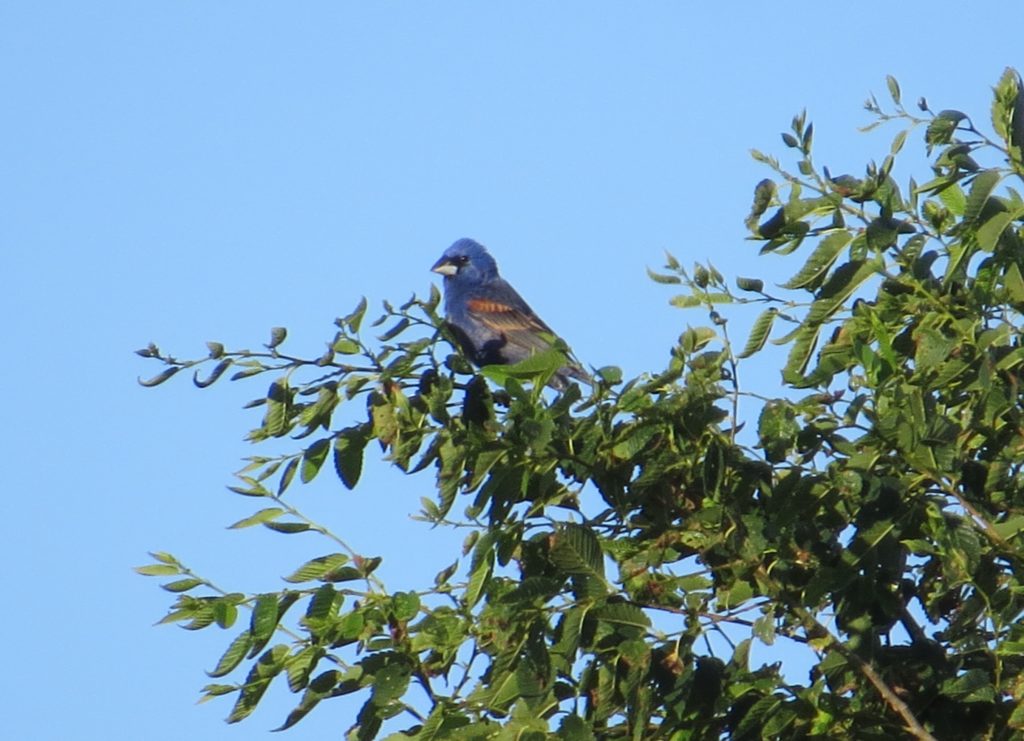 This second fellow was the quiet type. In fact, I stopped at this abandoned pit and didn’t see or hear a Blue Grosbeak. Playing a tape certainly couldn’t hurt in this situation. I’m glad I did because this bird materialized out of nowhere in an instant.
This second fellow was the quiet type. In fact, I stopped at this abandoned pit and didn’t see or hear a Blue Grosbeak. Playing a tape certainly couldn’t hurt in this situation. I’m glad I did because this bird materialized out of nowhere in an instant.
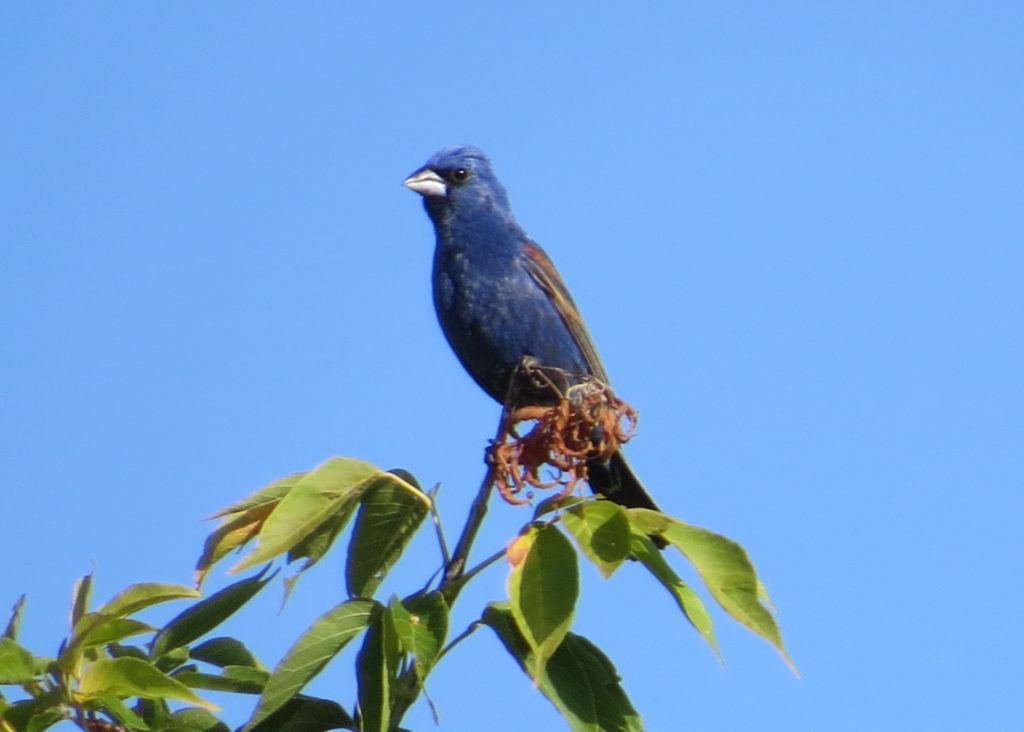 These were hollow victories. I wanted one in Kandiyohi in the worst way, especially as county first records fell in county after county: Anoka, Hennepin, and Washington. While I was happy the Blue Grosbeak was continuing to expand its range, I also kept wondering when it would be our turn. Always the bridesmaid. The Washington find really amplified these feelings. Pete Nichols and Ben Douglas set out to find themselves a county record BLGR and succeeded…minutes into their first attempt. I was both super proud and super jealous of these friends.
These were hollow victories. I wanted one in Kandiyohi in the worst way, especially as county first records fell in county after county: Anoka, Hennepin, and Washington. While I was happy the Blue Grosbeak was continuing to expand its range, I also kept wondering when it would be our turn. Always the bridesmaid. The Washington find really amplified these feelings. Pete Nichols and Ben Douglas set out to find themselves a county record BLGR and succeeded…minutes into their first attempt. I was both super proud and super jealous of these friends.
As we went deeper and deeper into August, my hopes for finding that elusive Kandiyohi Blue Grosbeak in 2017 had completely died. Like any losing sports team, hope was immediately placed on next year. Besides, there was something new and shiny in the bird world to divert my attention–an insane irruption of Red Crossbills! Blue what? We Kandi birders were red-eyed trying to tally this species that had eluded the likes of Randy Frederickson and Ron Erpelding for over 25 years. Now it was a very real possibility we would all get one. Efforts had shifted suddenly and dramatically.
Joel Schmidt was the first Kandi birder to break the ice with the Red Crossbills, seeing a flyover flock at the Little Crow Golf Course in New London on the evening of August 17th. At the time, I was camping at Sibley State Park with my brother and was not far away. I had to abandon my brother and kids the next morning to go look for an hour or so. We were unsuccessful, and so I returned to camping. While I was playing cribbage with my brother, I got a call from someone in Grand Marais. Who the heck do I know there? I declined the call figuring if it was important that they’d leave a voicemail. Nothing. I then put my phone in the camper to charge it. Sometime much later in the afternoon during a pause between cribbage games, I went to check the time on my phone. It had blown up while I was away from it and was littered with crazy numbers of text messages, missed phone calls, and voicemails. Something really big was going down, and I couldn’t process the information fast enough. As I tried to make sense of the messages, my initial thought was that someone had landed the Red Crossbills, but instead of “red” I saw “blue” and “grosbeak” was where “crossbill” should be and there was a “Hockema” and a “Watson” mixed in. Then it hit me. Oh. My. Gosh.
I quickly learned that visiting birders John Hockema, Chris Hockema, and Josh Watson had stumbled into a private gravel pit, found a Blue Grosbeak, and had secured permission for a small band of us to return. The Grand Marais caller now made sense–Josh Watson was from there. But that call was almost a couple hours ago! Thankfully the guys were still on the scene by the time we got all this info sorted out. Another bonus was that this pit was just a few miles from my present location at Sibley. I could literally be there in 5 minutes. Once again I abandoned my brother and kids to go on another crazy bird chase.
The entrance to the pit was a long, private road leading west from U.S. Highway 71. The Blue Grosbeak victors were waiting at the gate to meet Randy Frederickson and me and lead us to glory. The greetings were joyous with much laughter and banter. These fellows were relaxed and in good spirits while Randy and I were trying to hide the tension that comes when a county bird is nearby but has not yet been notched. Finally, we hopped in our cars and followed these visiting birders as they led us in our own backyard. It was a surreal experience, to say the least, when we traveled into this vast complex of gravel pits we had never seen before, not even from a road. It was perfect Blue Grosbeak habitat. I may as well have been looking at Mars, I was so awestruck with the terrain. I had viewed this area on satellite maps many times but had never gotten around to getting permission to enter.
Once we finally got to the spot well over a half mile from the main highway, we got out and started looking. We had other birders on the way, so we were refraining from using a recording until all arrived. We did not want the recording to lose its effectiveness. While we looked, Chris Hockema showed me the exact spot where Josh Watson had first spotted the bird. And suddenly I saw a bird fly over that had the right GISS. Josh had seen it too from a different angle and confirmed it was the Blue Grosbeak! So it was official, but not yet satisfying. We continued to search and search. Finally Ron Erpelding and Joel Schmidt had arrived, and we could try the tape. Ron played the tune, and instantly the bird teed up on a cedar! Unbelievable! It finally happened!!
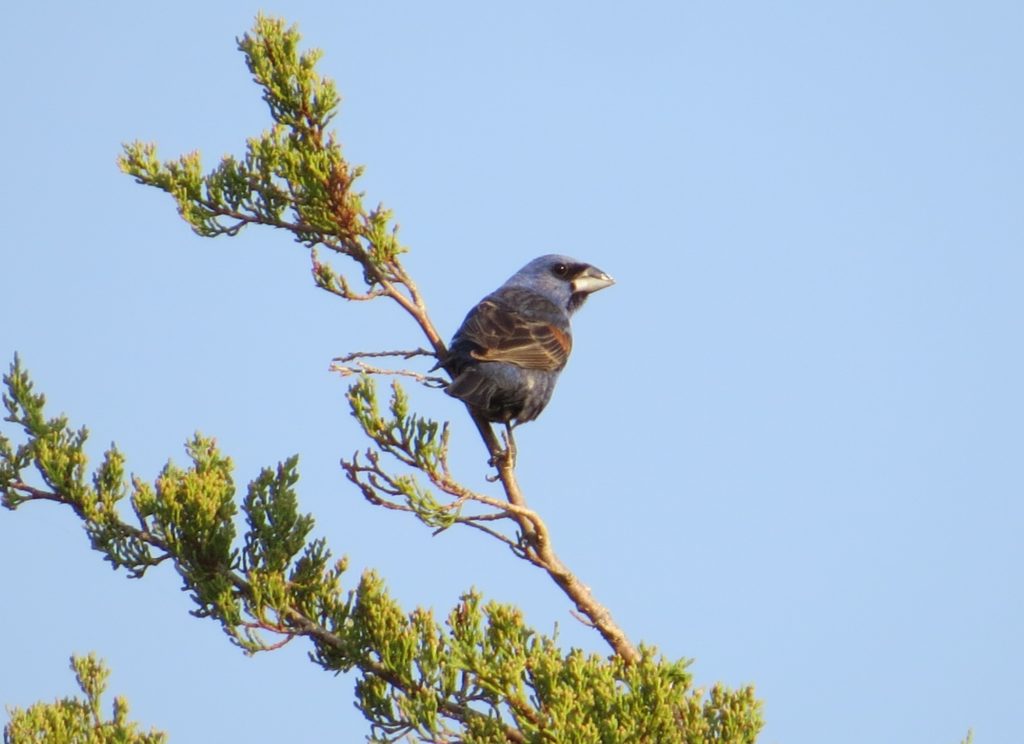
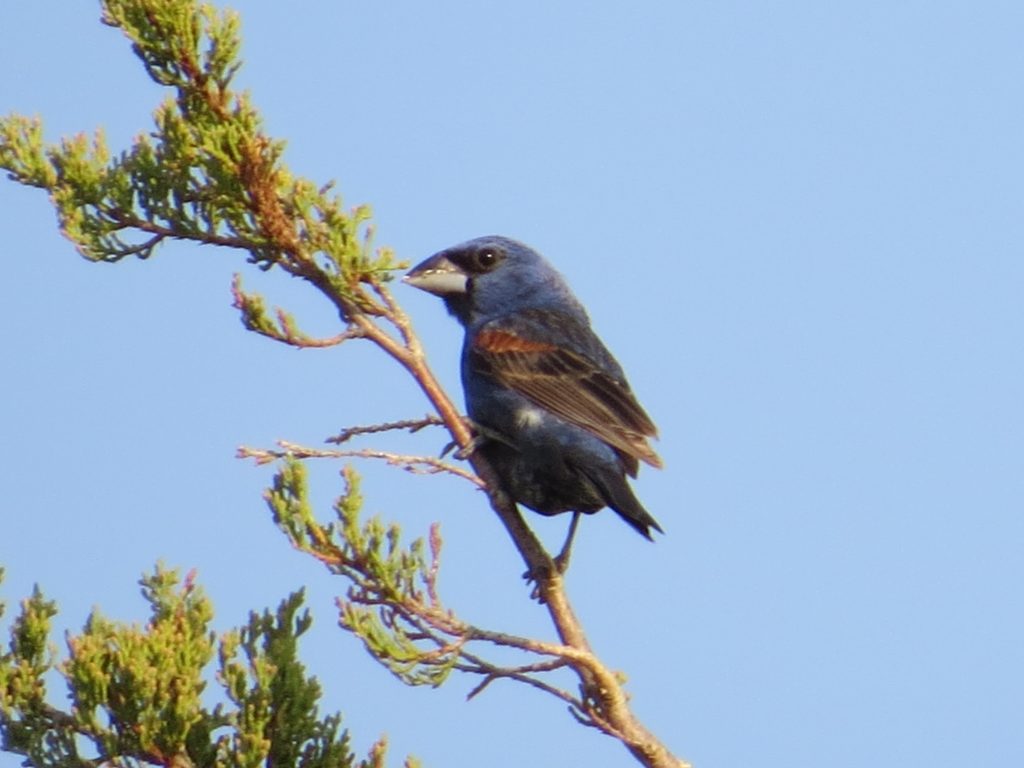 After hanging out there to our wild delight, it changed perches and hung out for a solid 10-15 minutes not moving. I don’t know that I’ve ever seen a Blue Grosbeak this confiding. This was the first time I had shared a county bird with long-time Kandi veterans, Randy and Ron. Giddiness abounded.
After hanging out there to our wild delight, it changed perches and hung out for a solid 10-15 minutes not moving. I don’t know that I’ve ever seen a Blue Grosbeak this confiding. This was the first time I had shared a county bird with long-time Kandi veterans, Randy and Ron. Giddiness abounded.
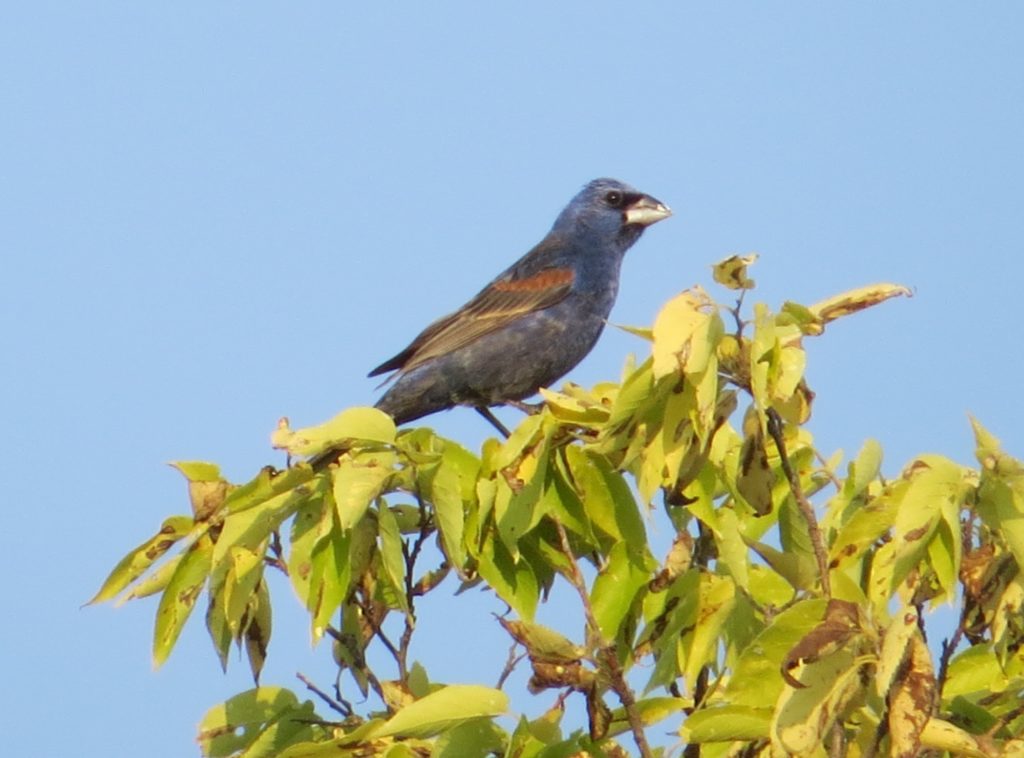
In a year that I had been pursuing new birds for my Kandi list, this one was more than just another tic. This is a bird I have pursued relentlessly for many summers. This is a bird I simply love to find–anywhere. A wave of joy and rest washed over me. Indeed there was some self-loathing from the Kandi crew that we had not found this ourselves, but in the end it did not matter. We were still overjoyed.
A MEGA thanks goes out to John Hockema who was in a Blue Grosbeak mood that day and decided to try for one in Kandiyohi. It took guts to drag his birding companions into a county that had been searched so hard for this bird already and at a time that was the tail end of the Blue Grosbeak season. One might even say it was a fool’s mission. It’s a good thing John is no fool and that Chris Hockema and Josh Watson are top notch birders. They all are deserving of the honor of having the Kandiyohi County first record Blue Grosbeak along with the case of beer I had publicly offered on social media for anyone who could find this bird.
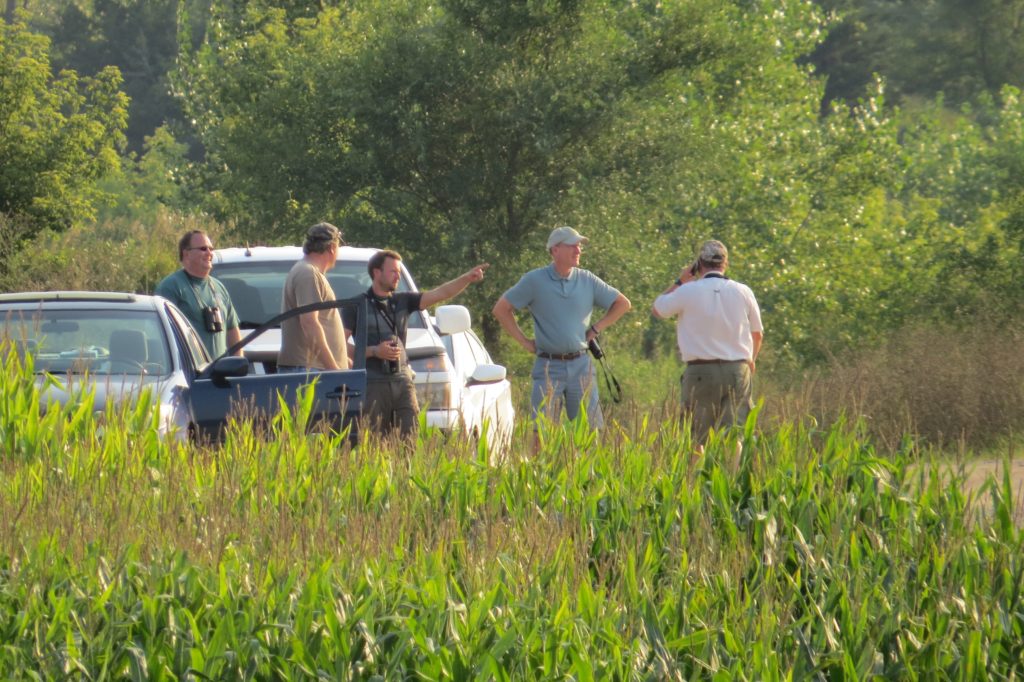
Hero Josh Watson points to where he first spotted the elusive Kandiyohi County first record Blue Grosbeak. L-R: Chris Hockema, John Hockema, Josh Watson, Joel Schmidt, Randy Frederickso
The Blue Grosbeak was Kandiyohi bird #252 for me. #253 was another shared county lifer with Ron and Randy, and it fell the very next day. In fact, I literally still had the camper hitched to my vehicle while in hot pursuit…
My Everest
Most birders keep lists. This is known. Yard lists, day lists, year lists, county lists, state lists, trip lists, lists of birds seen while nude, lists of birds seen while relieving oneself, lists of birds seen relieving themselves, and on and on…these are more or less different ways of keeping the hobby exciting and fresh. Depending on the birder, some lists carry more weight than others and some lists are never even made. My Kandiyohi County list has taken on a greater importance to me in the last couple years. 2016 was full of many new and exciting additions to my list that was already in the 200+ category, creating even more of an interest in this list. Something happens when you make a list and it starts to become significantly large–you notice others who keep the same list and see how you stack up in comparison. We have a great cadre of birders in Kandiyohi County who have amassed some incredible totals, and so I had no ambition (or realistic hope) of getting into the top 3. This was just accepted. But 4th place was within reach and was held by a non-resident of the county, the legendary Bob Janssen. Bob’s a great guy who I’ve learned a lot from, who I’ve helped in Kandiyohi County, and who I’ve had the pleasure of birding with a couple times, but I had just one thing against him–he wasn’t from here. I felt that the top spots should belong to those that toil for birds in the county the most, the local birders. Therefore, at the end of 2016, I set out to pass Bob Janssen.
Though it was a reachable goal, this was no small task. I ended 2016 with 244 county birds. Bob was at 250. I needed 7 new birds to meet my goal. It seems like a small number, but any longtime Minnesota birder knows that new county birds are very hard to come by with a total like mine. Nevertheless I was determined. To accomplish such a feat would require a lot of work and a lot of time birding. I didn’t waste any time either, getting #245 on January 1st.
January 1: #245–Short-eared Owl, 6 Birds to Goal
The Kandi birding crew joined forces on New Year’s Day, and thanks to some scouting by Aaron Ludwig on New Year’s Eve, we were victorious. It was a banner year for Short-eared Owls across the state. It felt really good to finally notch this one.
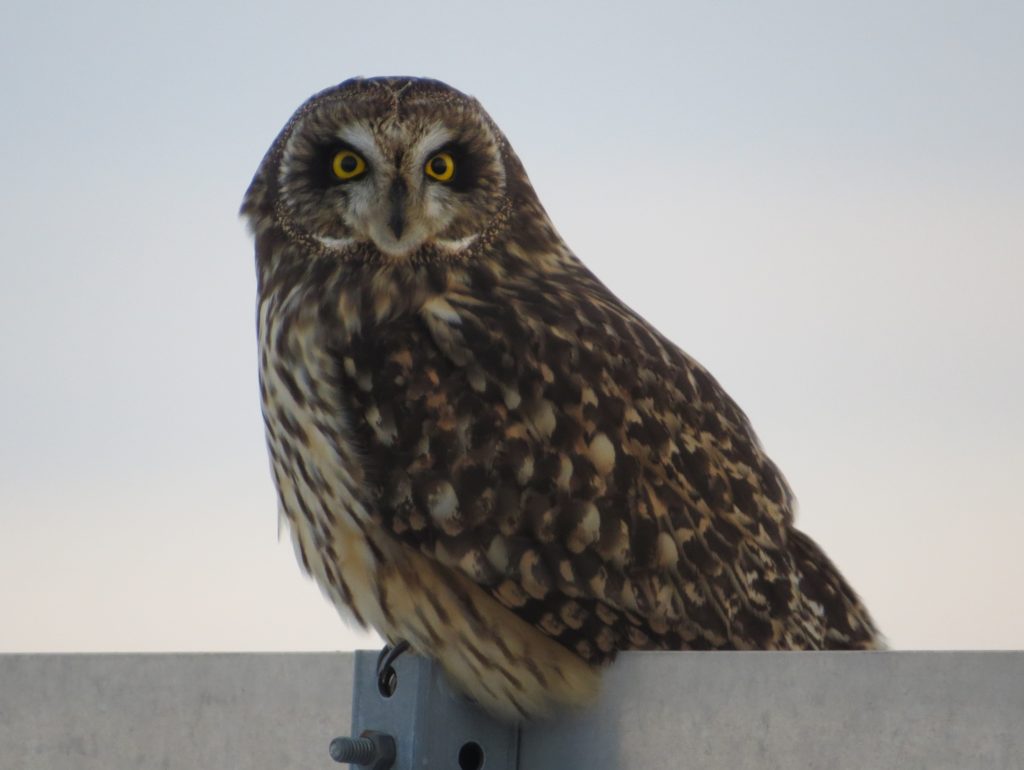
February 4: #246–Townsend’s Solitaire, 5 Birds to Goal
Another Kandi birders’ group event was successful as we targeted Townsend’s Solitaire. This individual was found by the team consisting of Milt Blomberg, Dan Orr, and Herb Dingmann. This was another overdue, feel-good county bird.
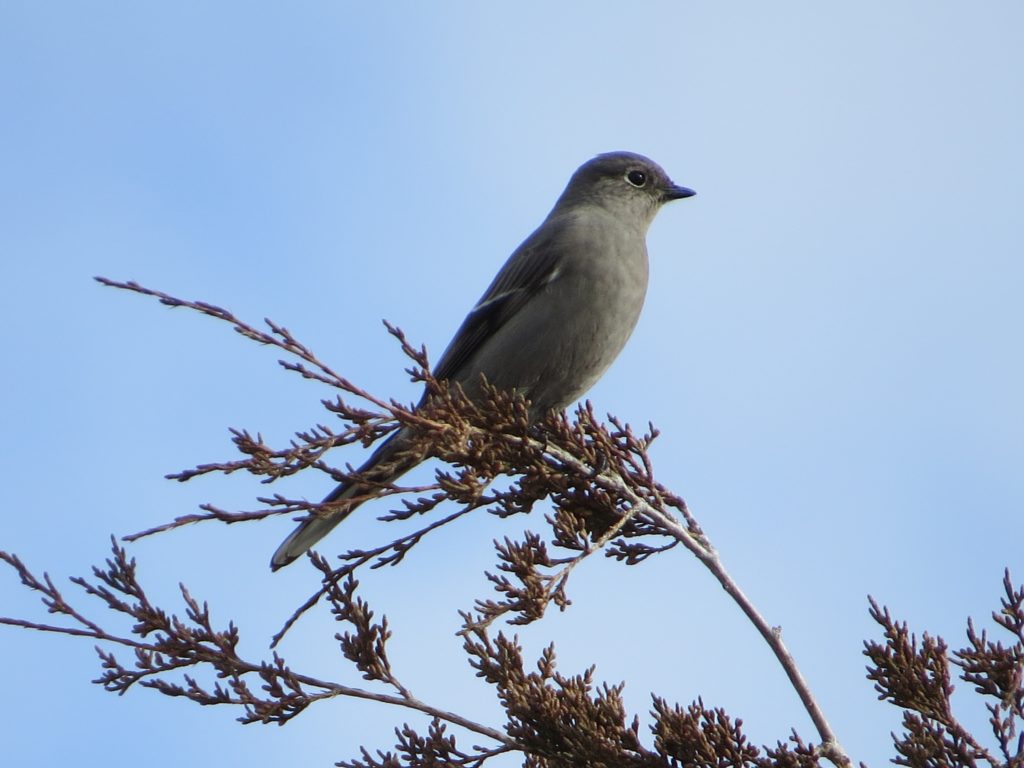
February 19: #247–Long-eared Owl, 4 Birds to Goal
A second county Owl in as many months?! Steve Gardner and I went looking for Long-eared Owls on this day. Despite many, many fruitless attempts in the past, we did not come up empty this trip. Victory never felt so sweet.
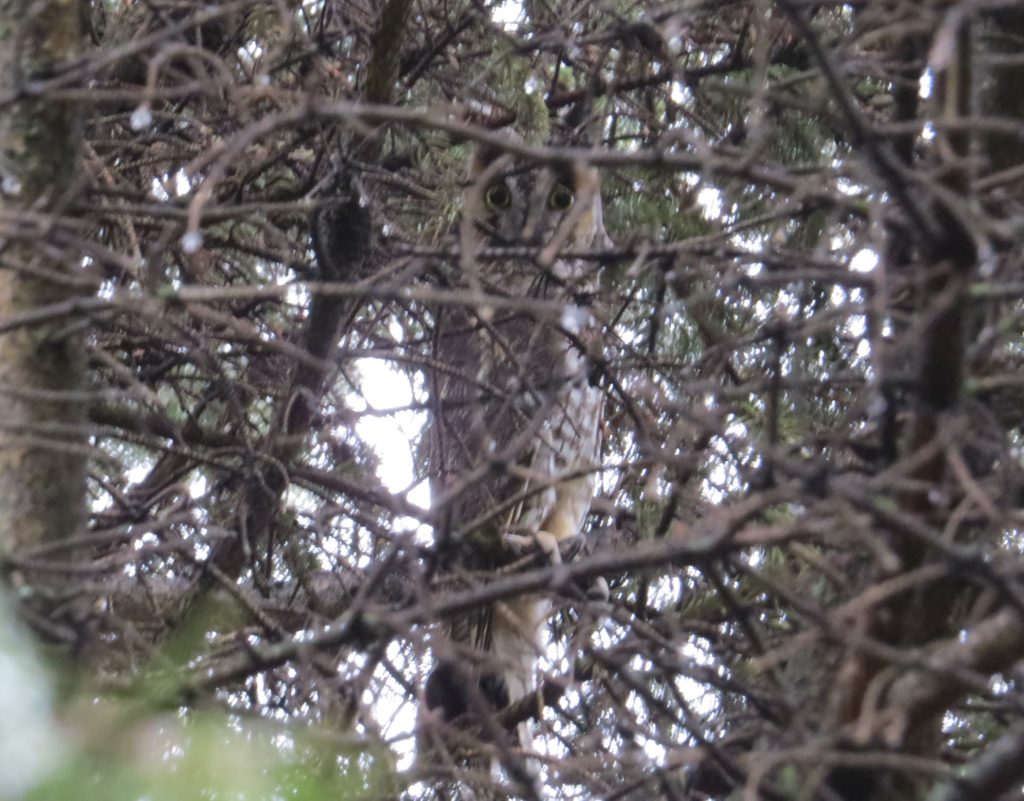
May 18: #248–Black-throated Green Warbler, 3 Birds to Goal
Three months had gone by without a new addition to the county list. Serious doubt about achieving the goal was setting in hard. With that said, there was one bird that I simply had to nail down this year, a bird that had painfully eluded my county list year after year. Each year I have a very good chance of getting it too. I have chased this bird in the county many times, even literally once to the point I had to catch my breath in the process.The BTNW was a waaaaay overdue county bird. I had gone out many, many times this past spring to look for one. And it still continued to slip my grasp. Then, on May 18th, Joel Schmidt called me about an hour before sundown saying he found one at a country church and cemetery in the western part of the county. I got out there just before dark and was able to dig it up. Finally.
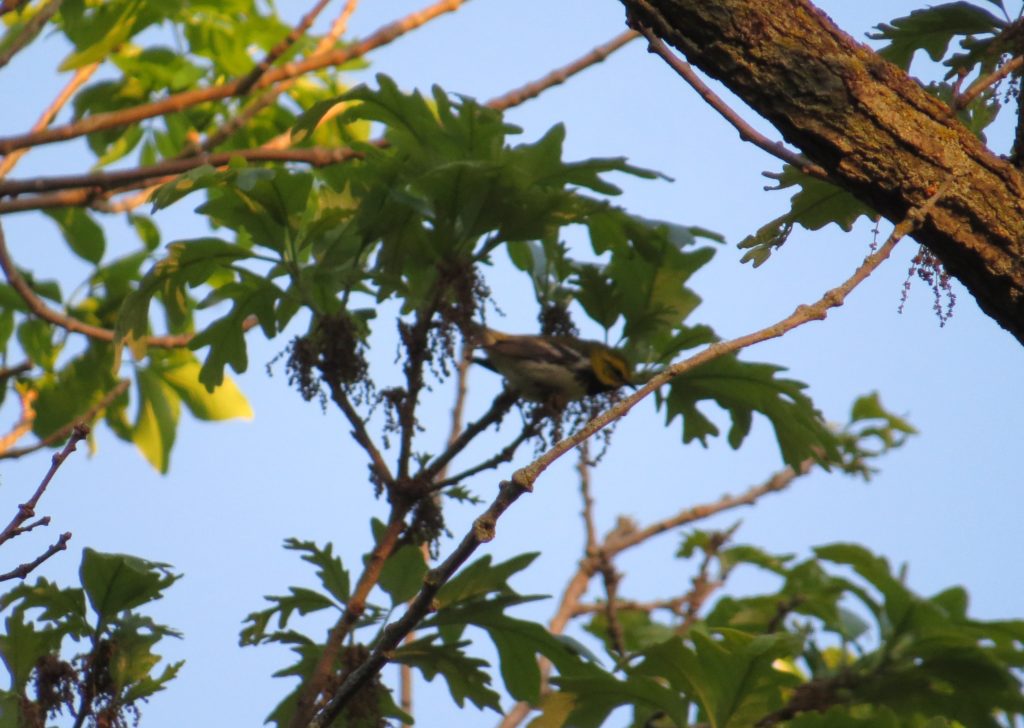
May 26: #249–Connecticut Warbler, 2 Birds to Goal
Spring migration is one of the best times of year to try to pick up a new county bird. However, at the end of May, migration was wrapping up quickly as birds started settling in to raise families wherever they called home. I was still checking for a couple a shorebirds I needed in this last week of May, like Marbled Godwit and Sanderling. Then somehow I started to notice that Connecticut Warblers were being reported in various places, and these birds were all singing. This is a bird that was never on my radar. I figured if I was to get this one on my county list, I would have to get lucky some spring migration and catch a quick glimpse of this skulker. So I asked the godfather of Kandiyohi birding–Randy Frederickson–about them, and he said he will have a Connecticut singing in his yard about one out of every four Memorial Day weekends. What?! I’ve come to learn that Randy is a huge deposit of birding information that has to be continually mined to get the nuggets of birding intel out of him. So even though this bird was never even a candidate for my goal of seven new county birds, it quickly became one. I found a singing Connecticut Warbler in neighboring Meeker County on May 25th, so I was even more obsessed with finding one in Kandiyohi. For awhile I was making daily trips to Robbins Island Park in Willmar just to look for this bird. Even though most migrants had moved through, there was still hope for this one. And I was less intimated to look for this bird armed with the knowledge that these birds often sing during migration.
On my trip to Robbins Island on My 26th, I was stopped dead in my tracks by this:
No, it wasn’t the Connecticut I was after, but I don’t know if getting my first personally found and second county Cerulean Warbler was any less exciting!
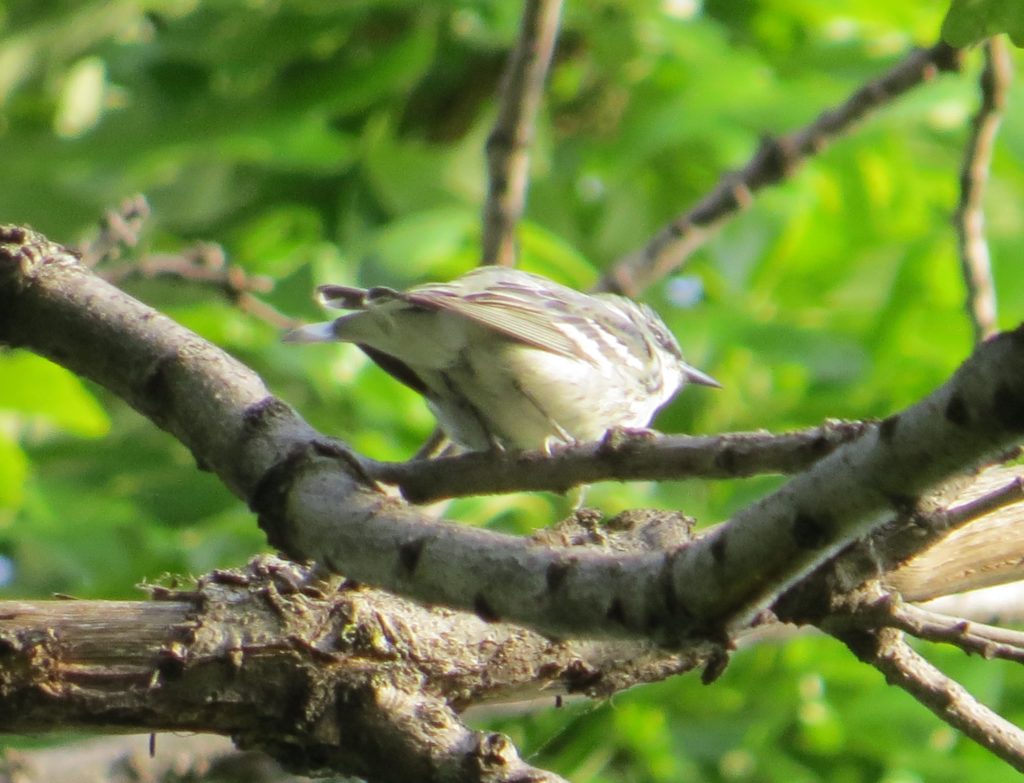
I must have spent an hour listening to this bird and following it through the trees. It was singing constantly and staying to a confined area. I was convinced the bird was on territory but later visits by myself and others proved otherwise. It’s a good thing I spent so much time with this Warbler because when I had to decided to give up on finding a Connecticut and was on my way out of Robbins Island, I heard this!
Connecticut Warbler!! I couldn’t believe it! Two new county Warblers within one week and two incredible Warblers in this outing! Suddenly, the dream of reaching #251 was very much alive. And to add some Warbler icing to the delicious Warbler cake was a singing and posing Black-throated Green–proving once again the birding law that says once a hard-fought bird falls, it falls hard.
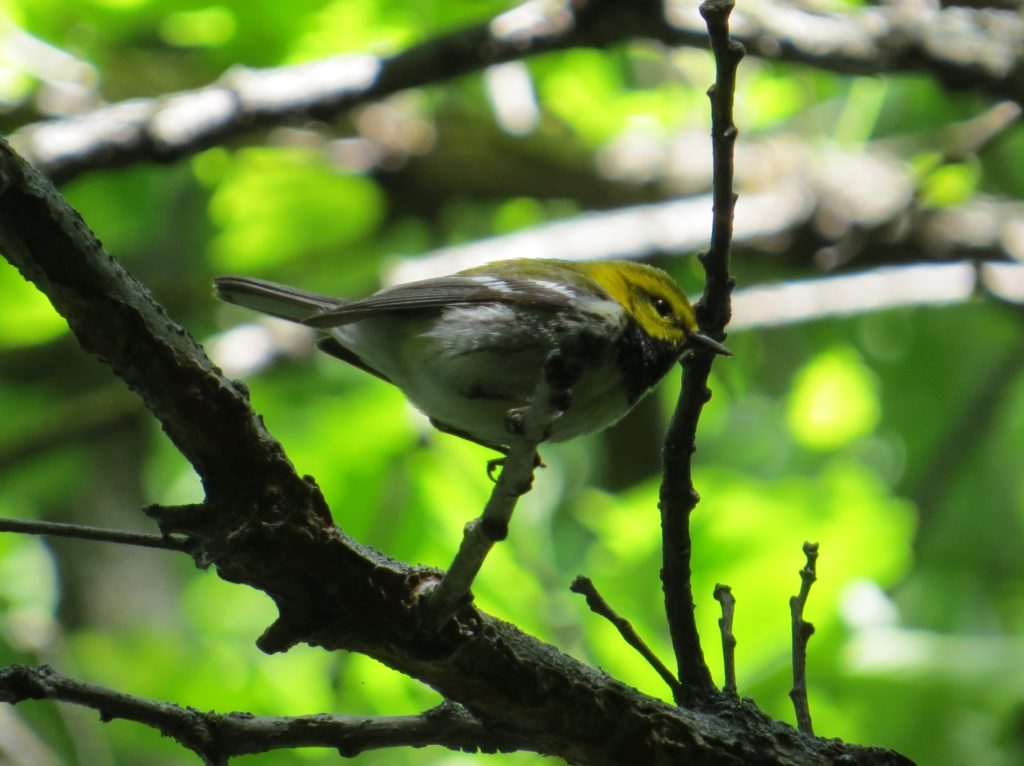
May 30: The One That Got Away
In any kind of big year or any regular year with a big birding goal, there will inevitably be pain. This is a given. There is also a long-standing birding rule that says that really good things will happen back home whenever you go on a trip somewhere. Well, on the afternoon of May 30th, my family and I had just landed in Phoenix for our Flagstaff vacation. As we were heading up I-17, my phone started blowing up with group text messages: Randy had a Summer Tanager make some appearances at his feeder. It was reliable enough that Steve Gardner and Joel Schmidt were able to pop over and see the bird after a brief wait. My wait was a lot longer, like several days longer. It was as good as gone. I was really bummed, and it definitely dampened the birding mood a little bit while I was in Arizona hunting down my Flam lifer.
June 16: #250–Snowy Egret, The Penultimate Bird
One thing my buddy Tommy DeBardeleben taught me is that when a good bird slips through your fingers, you get back out there and find your own rarity. The last time I went to Arizona I missed a Brant and Red Phalarope back in Minnesota. When I came home I poured my woes into my ongoing Surf Scoter hunt and dug out a Kandiyohi County first record Surf Scoter. Experiences like that give you something to draw on when the tank is empty. Though I was tired from the vacation, a move(!), and chasing life birds at North Ottawa Impoundment, I was pushing myself to get that next county bird. Summer had settled in, and my options for a new county bird were very limited. One bird that I really wanted to get and one that I felt was probably in the county every year somewhere was a Snowy Egret. On the morning of June 16th, I set off to find one. I expected to come home empty-handed as I have so many times on my numerous outings this year. Regardless, I was going to check several spots around the county, mostly drainages and some wetlands where I’d seen Great Egrets congregating. After several hours and dozens of miles, I made my last stop: a newly formed wetland just off the Willmar bypass. I spotted a lone Egret out there, and I was well over a quarter mile away. I don’t own a scope, so I had to use my camera to take some blurry long-distance shots. As I reviewed them, I couldn’t believe it–a small Egret with a long, black bill and yellow lores. It was the Egret I wanted!
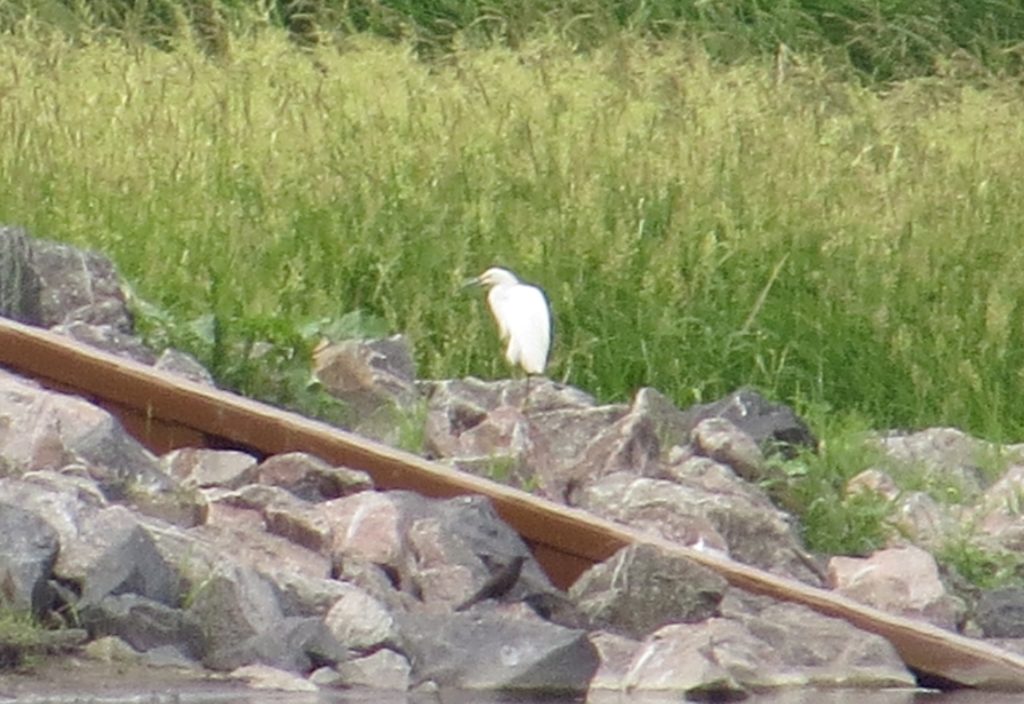 An Egret vs. Egret pic is always a nice assurance for an ID of such an important bird.
An Egret vs. Egret pic is always a nice assurance for an ID of such an important bird.
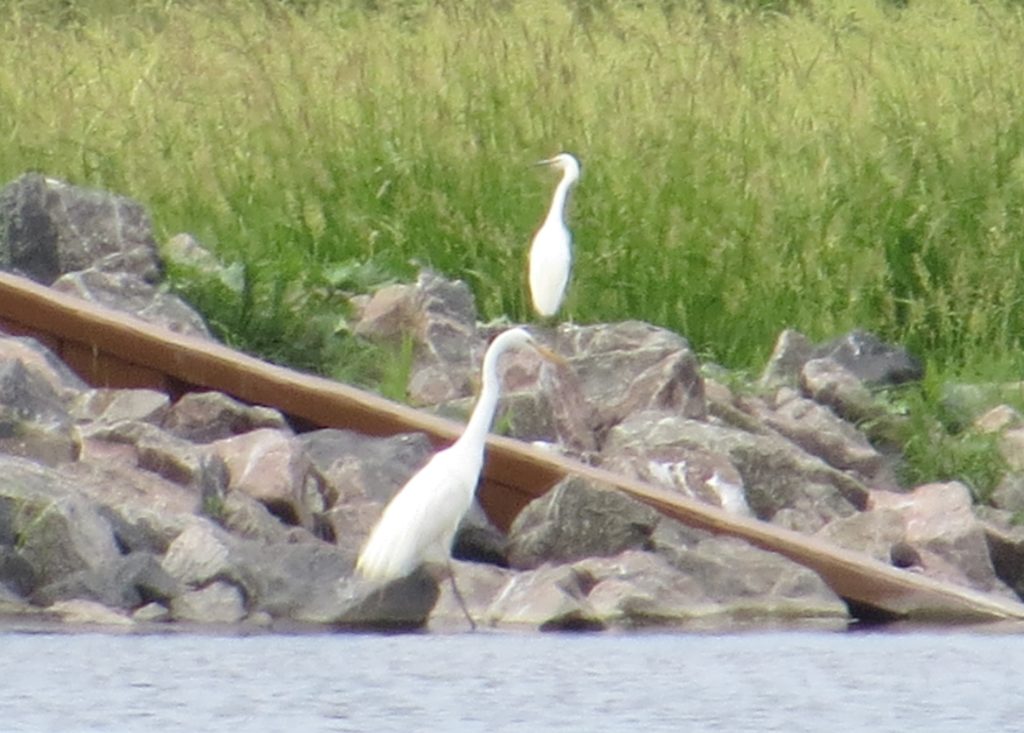 I was now tied with Bob. Wow. Some people get excited over reaching round-number milestones, like this 250, but not me. I wanted a crooked number. I wanted that #251 in the worst way. While my motivation in the beginning was to pass Bob’s number, my motivation was now about me meeting what I once thought was an unattainable goal. More than anything I wanted to do what my mind had declared an impossibility or at least a far-fetched possibility way back in December. I wanted that 7th bird in the worst way, more than a lifer even. And it was only June. I had averaged one new county bird for each month in 2017, and I still had 6 months left to get just one new county bird.
I was now tied with Bob. Wow. Some people get excited over reaching round-number milestones, like this 250, but not me. I wanted a crooked number. I wanted that #251 in the worst way. While my motivation in the beginning was to pass Bob’s number, my motivation was now about me meeting what I once thought was an unattainable goal. More than anything I wanted to do what my mind had declared an impossibility or at least a far-fetched possibility way back in December. I wanted that 7th bird in the worst way, more than a lifer even. And it was only June. I had averaged one new county bird for each month in 2017, and I still had 6 months left to get just one new county bird.
My birding intensified from that point on. I was obsessed, waking well before daylight and going out every morning. But with the Snowy Egret secured, I really had very little to search for in June. My searches were mostly after Henslow’s Sparrows and breeding Marbled Godwits in the very northeastern corner of the county, both of which were long shots. But I pressed on. Day after day I pushed myself out the door trying to make something happen. I’m a very impatient person. Even though I had half a year to reach my goal with just one bird, I wanted it now. I was driving myself crazy.
When it came time to visit family in northern Minnesota in late July, I didn’t want to go. I was afraid to go. That’s always when something good happens at home.
July 30, 2 AM: The Gift
I had made it through the up north trip without a birding emergency happening back home. Whew. We were scheduled to head home the morning of the 30th. We went to bed on the 29th, and I was awakened by my daughter who had a bad dream. After I got her settled down, I looked at my phone to check the time. On my homescreen I saw two emails that had come in while I was sleeping–one an eBird rare bird alert and the other an eBird needs alert for KANDIYOHI COUNTY!! What the?! I was wide awake now. Not many people bird in Kandiyohi County, let alone eBird in Kandiyohi County, let alone find rare birds and especially rare birds that I’ve never seen in Kandiyohi County. I couldn’t open the emails fast enough. Our county had a visiting superstar birder whose incredible find had tripped both alerts. Kathleen MacAulay known for many incredible finds, including a state record Mottled Duck, had unearthed a rare bird that is incredibly hard to discover because of its choice of habitat. Kathleen had found an entire family of Common Gallinules at a wetland I had never birded. I was in shock. Finally, finally, we got a gift bird–something that had been missing the first half of the year. Usually every year holds one or two random bird surprises. So far we hadn’t had one. All the rare birds I had seen in the county this year were reasonable expectations that were targeted and found. I couldn’t sleep the rest of the night. I knew that #251 was as good as in the bank since these Gallinules had young. I just had to get 265 miles across the state. That next morning the minutes felt like hours as we got ready to leave.
July 30, 5 PM: #251–Common Gallinule!
Not only did I have to get my family back home, but then I had another half hour trip to the location of these Gallinules. But finally I made it there. Others had seen the birds a few hours earlier. I was patient but I wasn’t patient. I knew it would happen, but I wanted it to happen instantly. While I watched the small corner of the cattail slough, I caught sight of my second county Least Bittern.
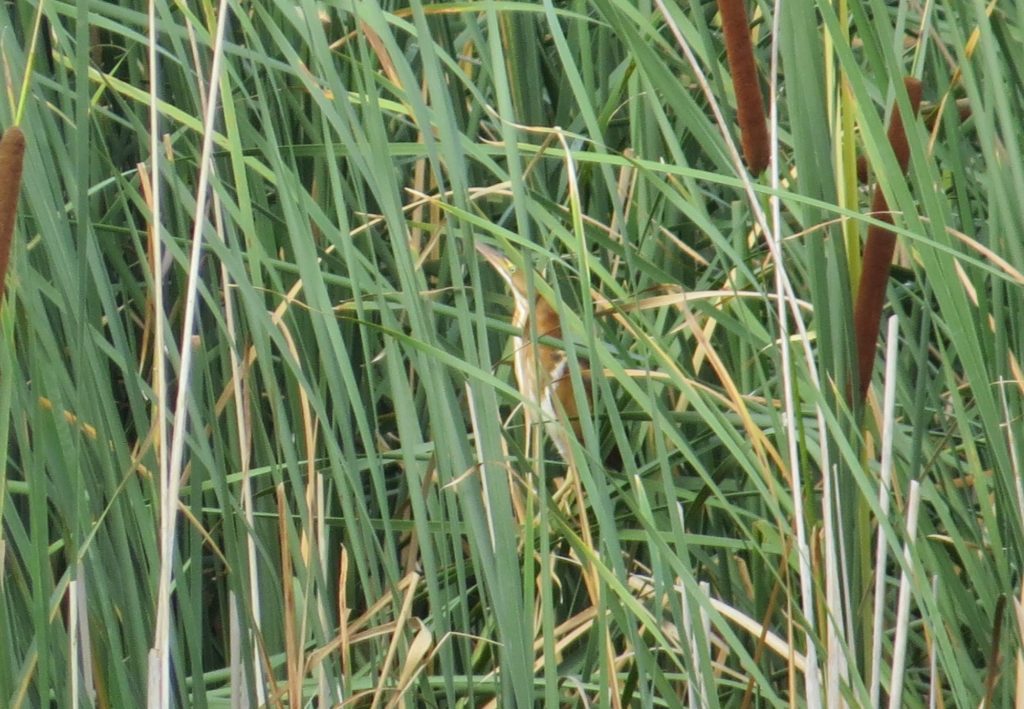
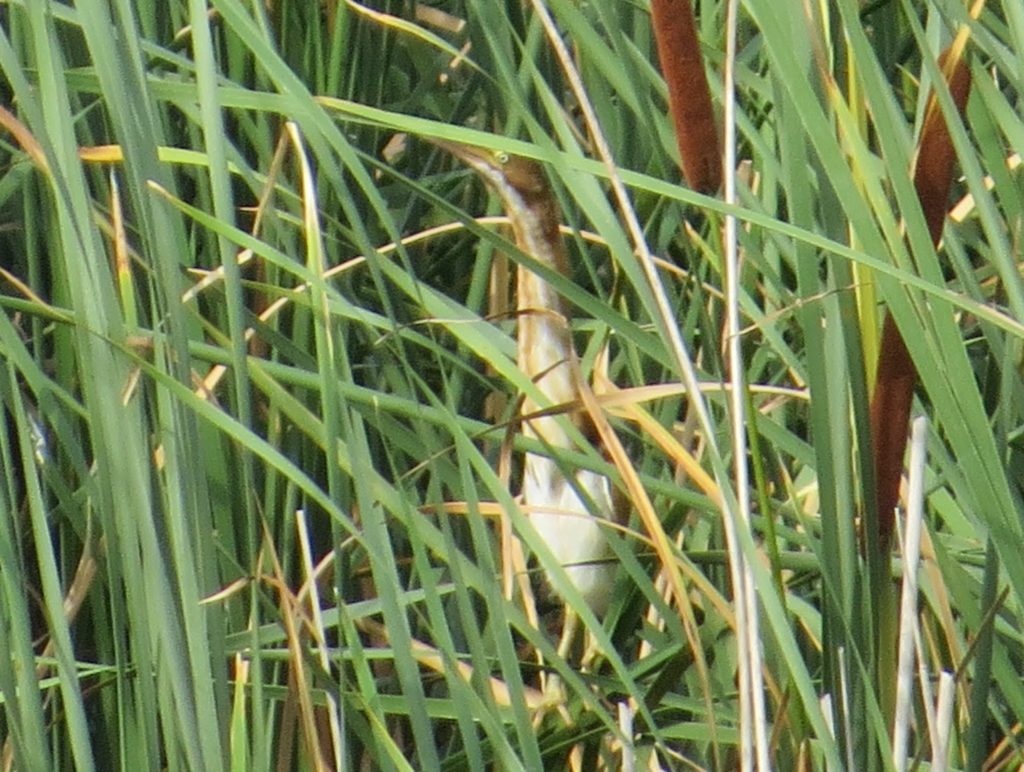 The Bittern was a fun find, but I wanted to see those Gallinules bad. I did hear one of the adults vocalize at one point, so it was officially notched. Since it was such a monumental bird, though, I really wanted to see it. Finally, patience paid off as I spotted one of the babies.
The Bittern was a fun find, but I wanted to see those Gallinules bad. I did hear one of the adults vocalize at one point, so it was officially notched. Since it was such a monumental bird, though, I really wanted to see it. Finally, patience paid off as I spotted one of the babies.
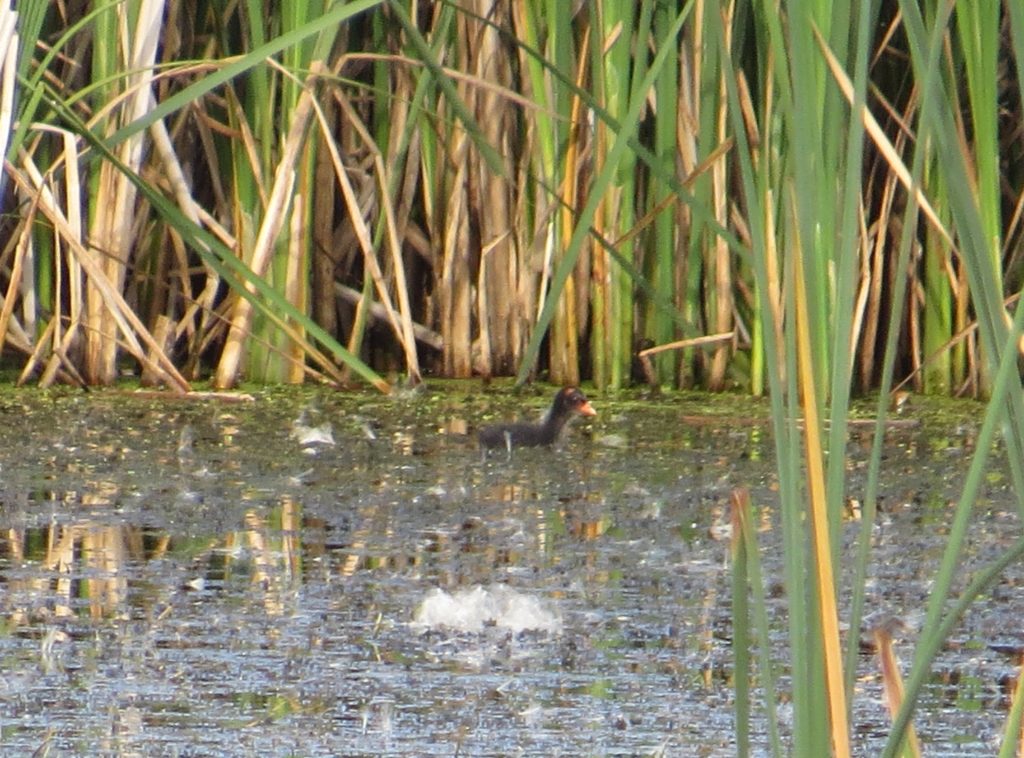 And then I saw two of the babies with one of the parents.
And then I saw two of the babies with one of the parents.
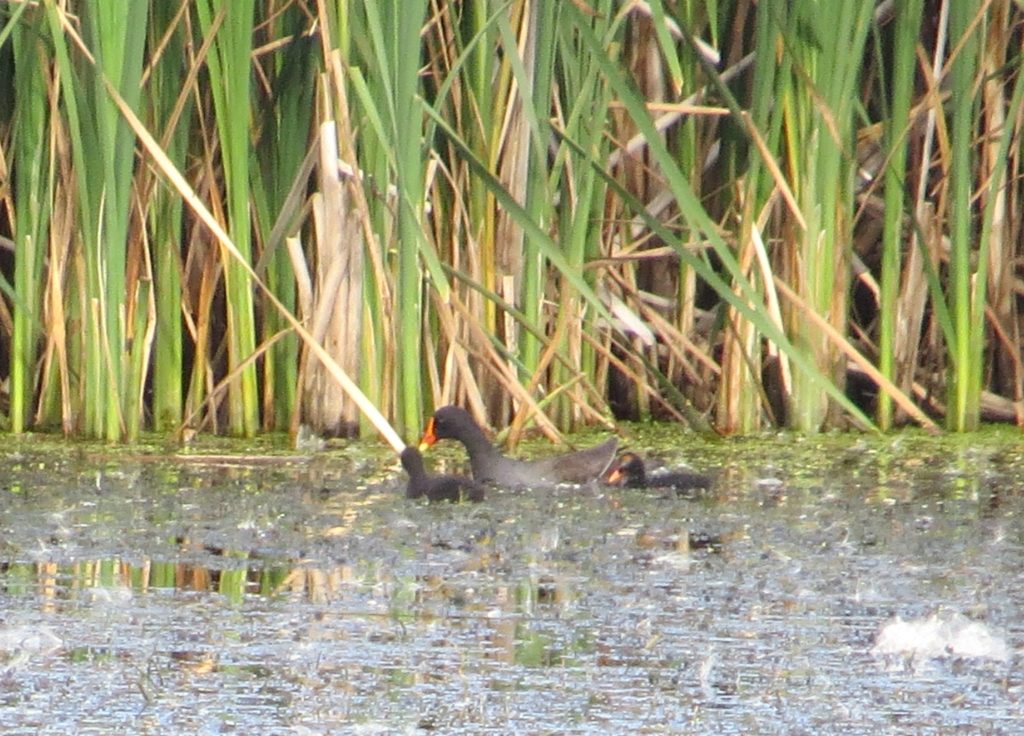 It was finished. I was ecstatic. The impossible had been achieved with a whopping 5 months left on the year. I had made it. Kathleen, if you’re reading, thank you very much for your great find!
It was finished. I was ecstatic. The impossible had been achieved with a whopping 5 months left on the year. I had made it. Kathleen, if you’re reading, thank you very much for your great find!
I learned something important from this entire experience: set high goals for yourself even if they seem like a pipe dream. Then write them down and work like crazy. This goes for birding or anything, really. Having my goals written out on paper back in December focused my birding and kept me driven. It was a huge thrill to add each new check mark and fill in those blanks on the piece of paper I keep tucked in my Sibley. Aim high and look high–the good birds are out there.
The astute reader will look at the picture below and realize the county listing story did not stop with #251. Hang on for the next post–longtime readers will get to see a long-running story line reach its wonderful conclusion.
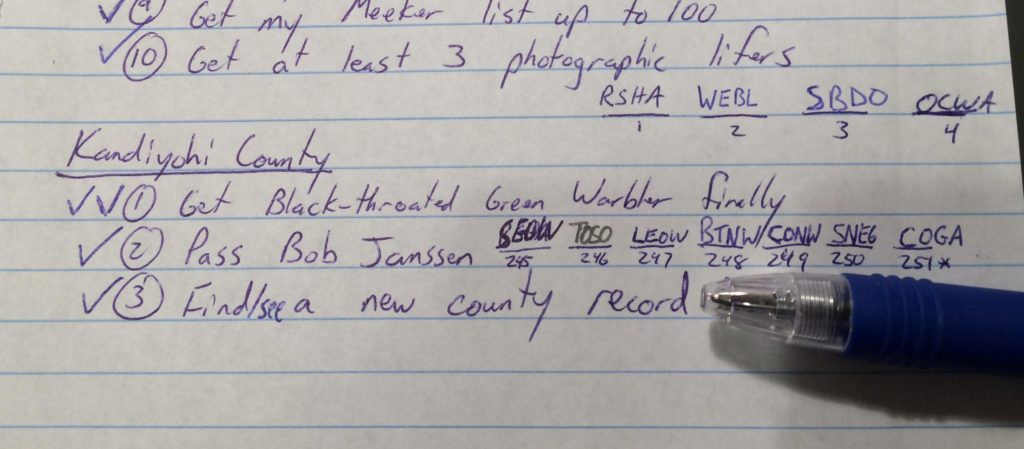
King Rail
Glossy Ibis
Nelson’s Sparrow
Pounding the Lifers at North Ottawa Impoundment
Ask any serious Minnesota birder where he or she was in June of 2017, and you will get one common response: the North Ottawa Impoundment in Grant County. While not exactly new to hosting good and rare birds, North Ottawa outdid itself this year. Or more accurately, an army of skilled birders outdid themselves as they descended on the Impoundment in waves and created a bonafide, honest-to-goodness Patagonia Picnic Table Effect. That term is sometimes used pretty loosely, but this was the real deal–a cascade of Accidentals, Casuals, and Rare-Regulars so intense that it threatened to rename the very phenomenon itself. Below is the timeline of the major birding events, including my multiple trips with Steve Gardner to the site in June. Even though this info is old news to Minnesota birders, I think the end of this post will hold a nice surprise for all.
June 5th
Shawn Conrad and Becca Engdahl separately report finding a Glossy Ibis, an accidental species that would be a lifer for me.
June 7th
Undoubtedly following up on the Glossy Ibis reports, Minnesota Big Year birder Liz Harper helps her own cause by discovering a Little Blue Heron, a rare-regular species which would be a state bird for me.
June 8th
Among the masses of birders now swarming the Impoundment, Gerry Hoekstra sends MN birders into a complete frenzy, including yours truly, when he finds a Snowy Plover, a casual species that would be a lifer for me.
June 9th
Steve and I go to North Ottawa. Any one of the three aforementioned birds would have justified the trip. Three in one spot was just ridiculous. We were hoping for at least one of these goodies. Fortunately I didn’t have to wait long to get that wish. I got the Little Blue Heron as a flyover almost right away. Unfortunately Steve missed it at that time but got it later in the day.
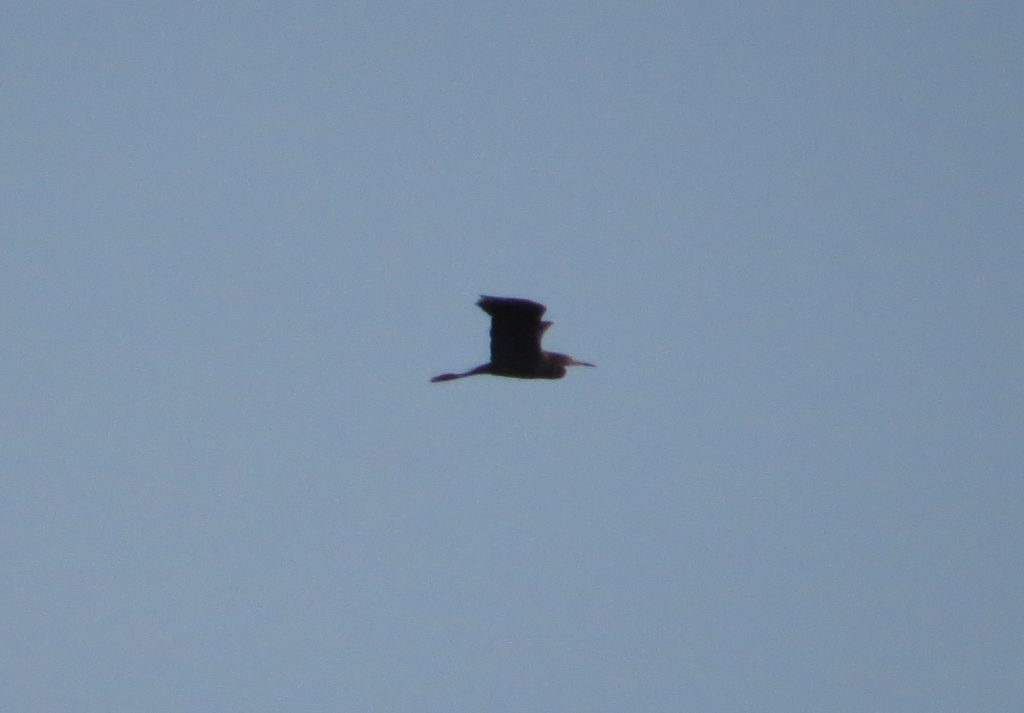
We tried unsuccessfully for the Snowy Plover but had no luck. Considering there were over a dozen birders out looking and no one was turning it up, it was safe to say that it was gone. We did, however, see the Glossy Ibis thanks to Wayne Perala, local birding guru who knew the bird and its habits so well that he told us where to look. And almost on cue, the bird flew up out of the cattails right by Wayne as he said, “There’s your Ibis.” This bird was super cooperative giving us great looks in perfect light. It was a life bird for me but just a state bird for Steve.
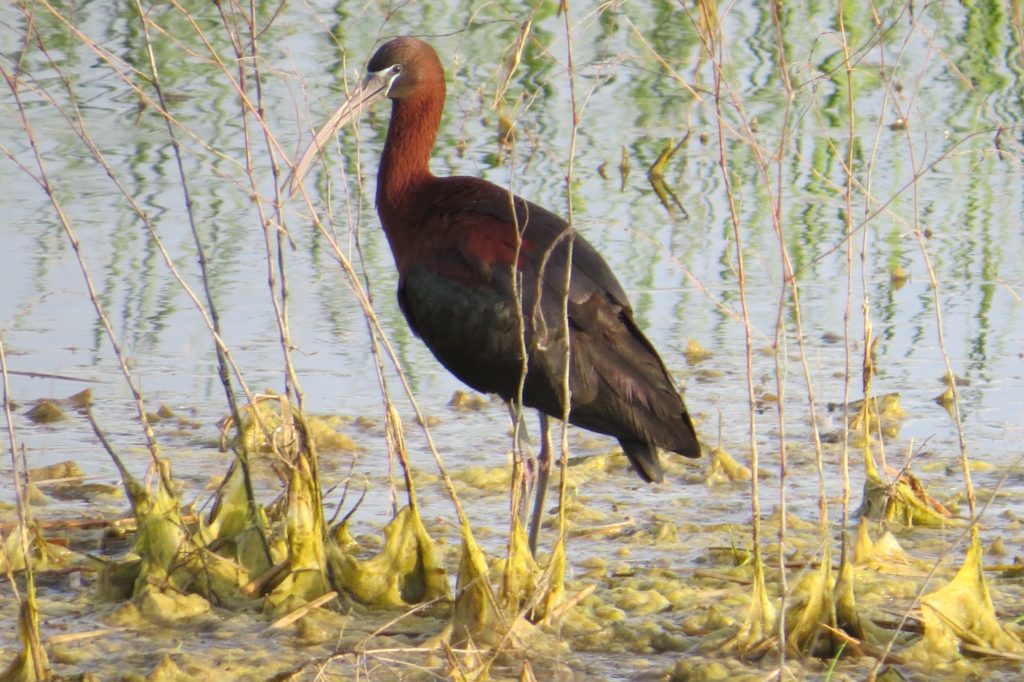
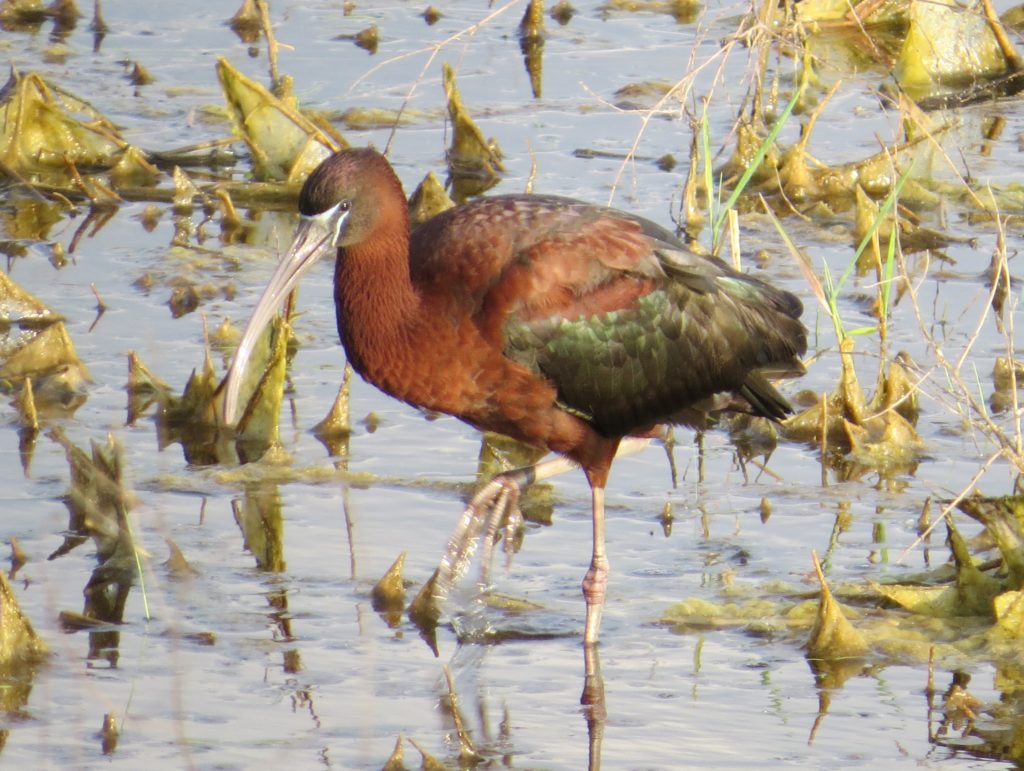 Steve and I were pretty thrilled with going 2/3 on our targets. In addition to these birds, we also nabbed some nice birds that we don’t get to see too often, like this Snowy Egret.
Steve and I were pretty thrilled with going 2/3 on our targets. In addition to these birds, we also nabbed some nice birds that we don’t get to see too often, like this Snowy Egret.
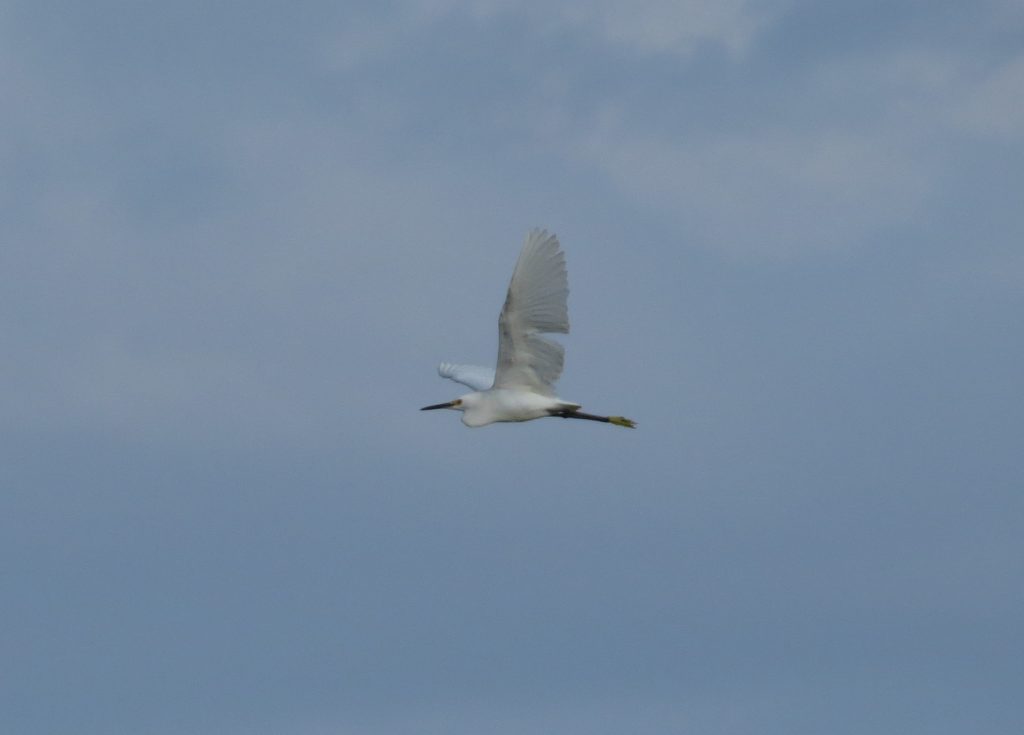
Western Kingbird never goes unappreciated in Minnesota. We were lucky to see this one.
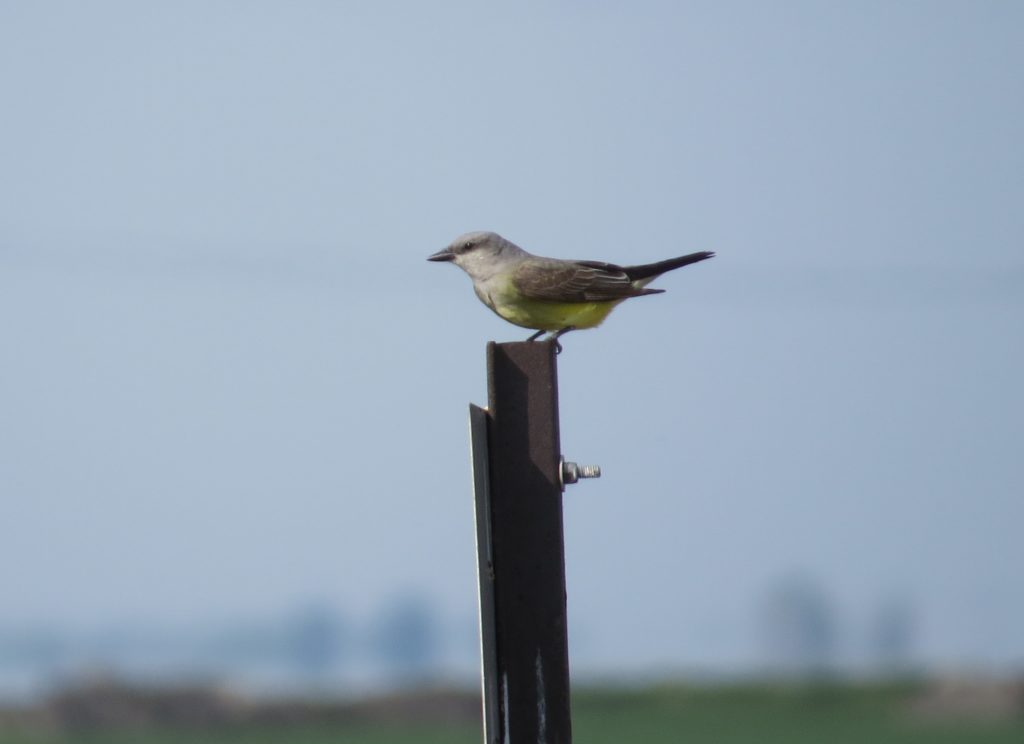 And who does not love seeing an Upland Sandpiper, especially one so crushable?
And who does not love seeing an Upland Sandpiper, especially one so crushable?
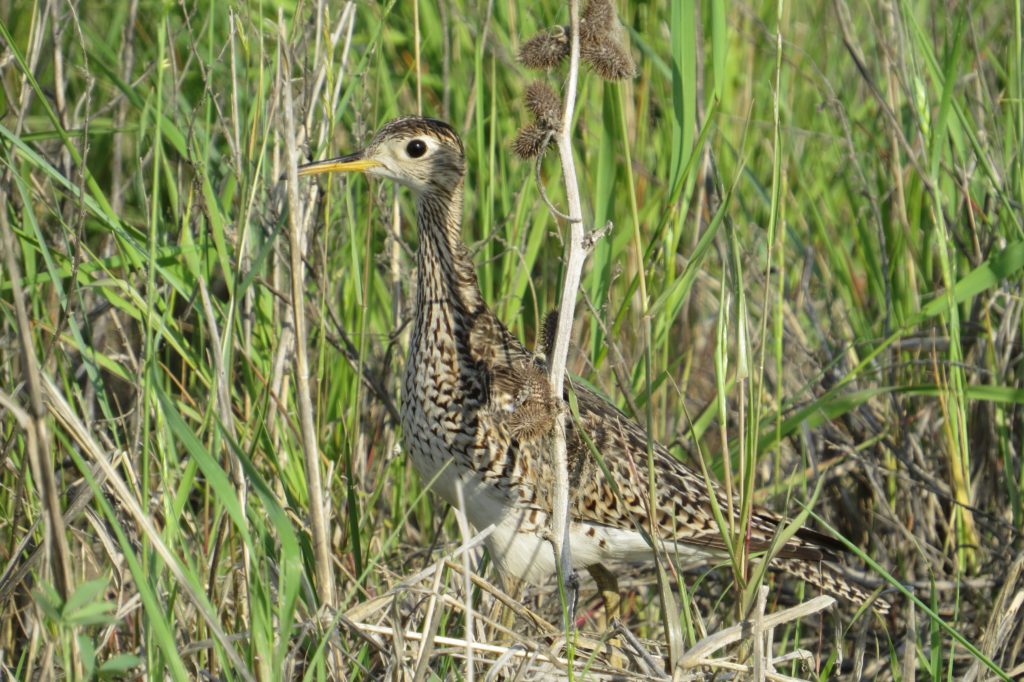
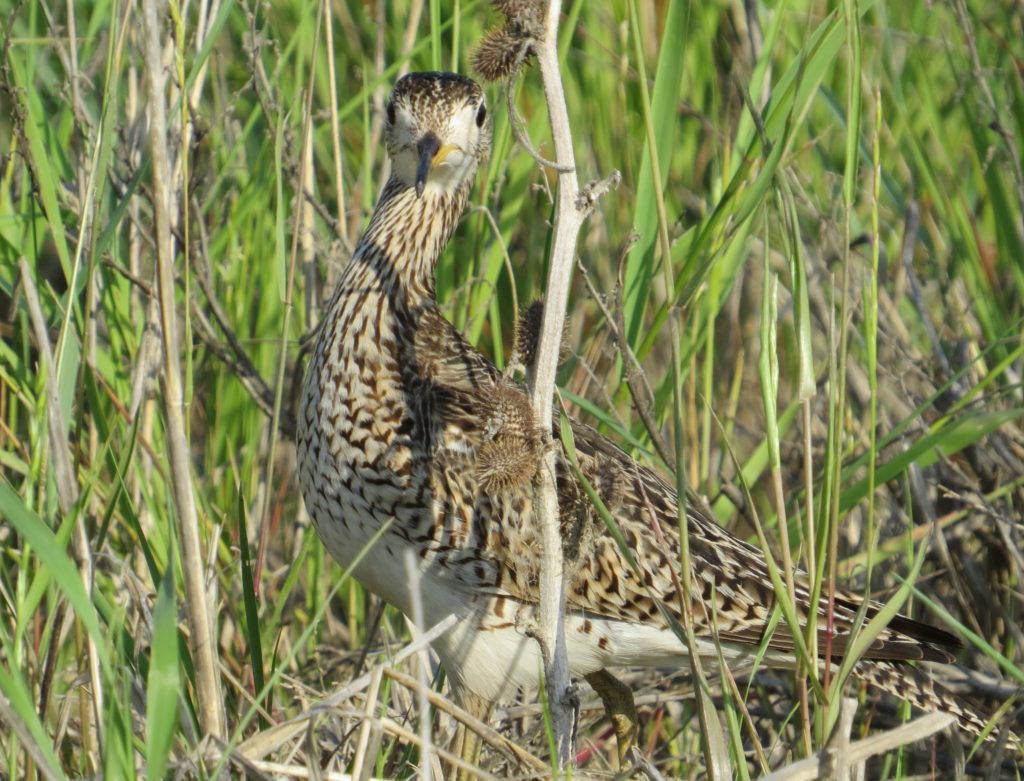 Steve and I felt pretty darn good about our trip and our nice haul of birds. We were completely satisfied, until….
Steve and I felt pretty darn good about our trip and our nice haul of birds. We were completely satisfied, until….
June 15th
Wayne Perala (remember nice guy, Wayne, from the Ibis story?) sent another shock wave through the Minnesota birding community by posting incredible pics of a King Rail, another accidental species that would be a lifer for me. Unfortunately timing was bad for me as I was getting ready to go on that Madeline Island trip that was highlighted by the last post. Indeed I had to suffer through pics and reports of many people adding the most recent North Ottawa mega to their lists.
June 23rd
Finally back from that Wisconsin vacation, Steve and I sneak up to the Impoundment in the evening. In the week since the Rail was discovered, other birders discovered there were two King Rails! Despite now having double the chance to see this lifer, our Rail search was a bust. The wind was raging and we were searching in slightly the wrong spot. We also tried searching for a lifer Nelson’s Sparrow reported by Becca Engdahl, but nothing likes to be out in the wind. Except Western Grebes, they don’t care.
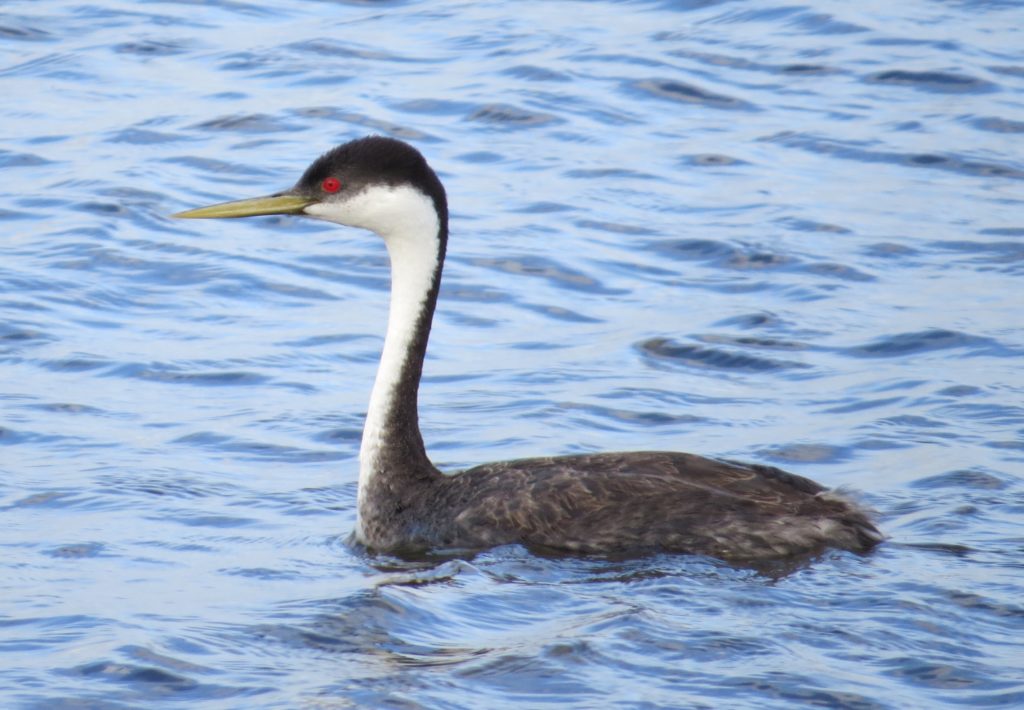 Steve and I did, however, see another casual species that was also discovered during this historic period of MN birding which I have failed to disclose in the timeline. A pair of Black-necked Stilts had set up shop in one of the shallow pools of the Impoundment. Considering I already had Black-necked Stilts for Grant County from several years ago and that Steve had just gotten this state bird recently, we just weren’t too fired up about it, especially after our double dip.
Steve and I did, however, see another casual species that was also discovered during this historic period of MN birding which I have failed to disclose in the timeline. A pair of Black-necked Stilts had set up shop in one of the shallow pools of the Impoundment. Considering I already had Black-necked Stilts for Grant County from several years ago and that Steve had just gotten this state bird recently, we just weren’t too fired up about it, especially after our double dip.
June 29th
With a renewed sense of optimism freshened up by continuing reports of the Rail pair, Steve and I headed back to Grant County for the third time in a month. This time we arrived at the crack of dawn on gloriously still day…in the right spot. Success.
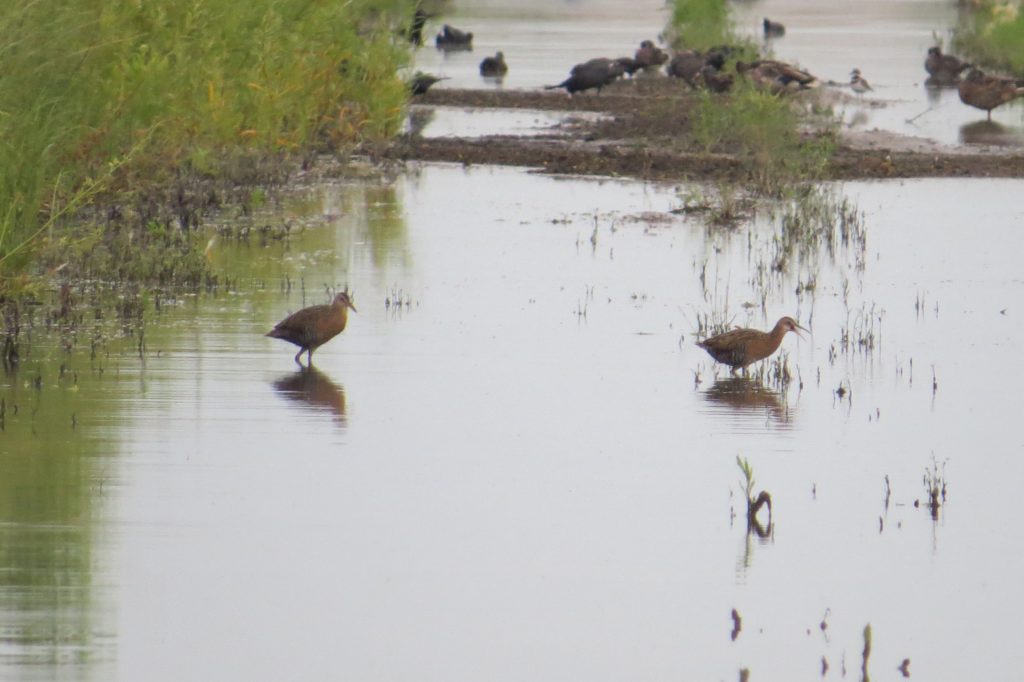 Look at the size of these things compared to the Mallards in the background. No wonder it’s the King of the Rails.
Look at the size of these things compared to the Mallards in the background. No wonder it’s the King of the Rails.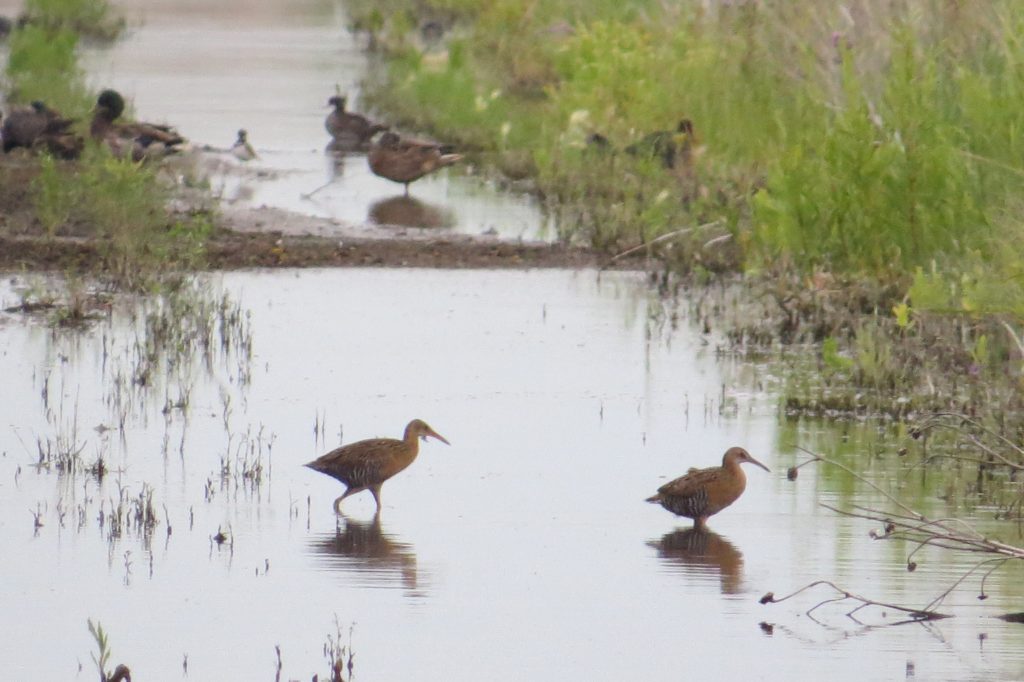
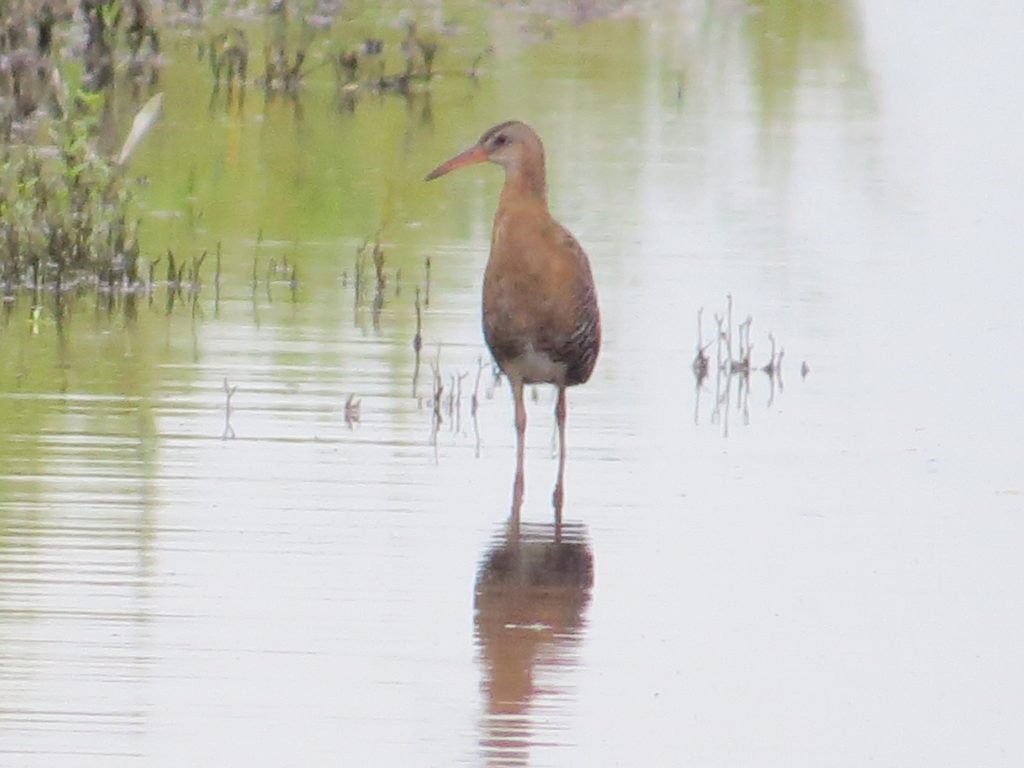 Birding is a roller coaster of emotions, and Steve and I were back on top after this sighting. Steve suggested we try for those Nelson’s Sparrows again. Despite our good fortune of the morning, I was skeptical we would find the Sparrows. But not looking certainly guarantees that outcome. So we walked the dike berm that we had a week ago. This time it definitely felt more Sparrowy–no wind, early morning, etc. We played the tape and didn’t get a response. Then a couple minutes later, I heard the recording, or what I thought was the recording, again. I asked Steve if he had left his phone app on. When he replied that he hadn’t we knew were hearing the real deal! We continued to work the area, and eventually we saw two Nelson’s Sparrows!
Birding is a roller coaster of emotions, and Steve and I were back on top after this sighting. Steve suggested we try for those Nelson’s Sparrows again. Despite our good fortune of the morning, I was skeptical we would find the Sparrows. But not looking certainly guarantees that outcome. So we walked the dike berm that we had a week ago. This time it definitely felt more Sparrowy–no wind, early morning, etc. We played the tape and didn’t get a response. Then a couple minutes later, I heard the recording, or what I thought was the recording, again. I asked Steve if he had left his phone app on. When he replied that he hadn’t we knew were hearing the real deal! We continued to work the area, and eventually we saw two Nelson’s Sparrows!
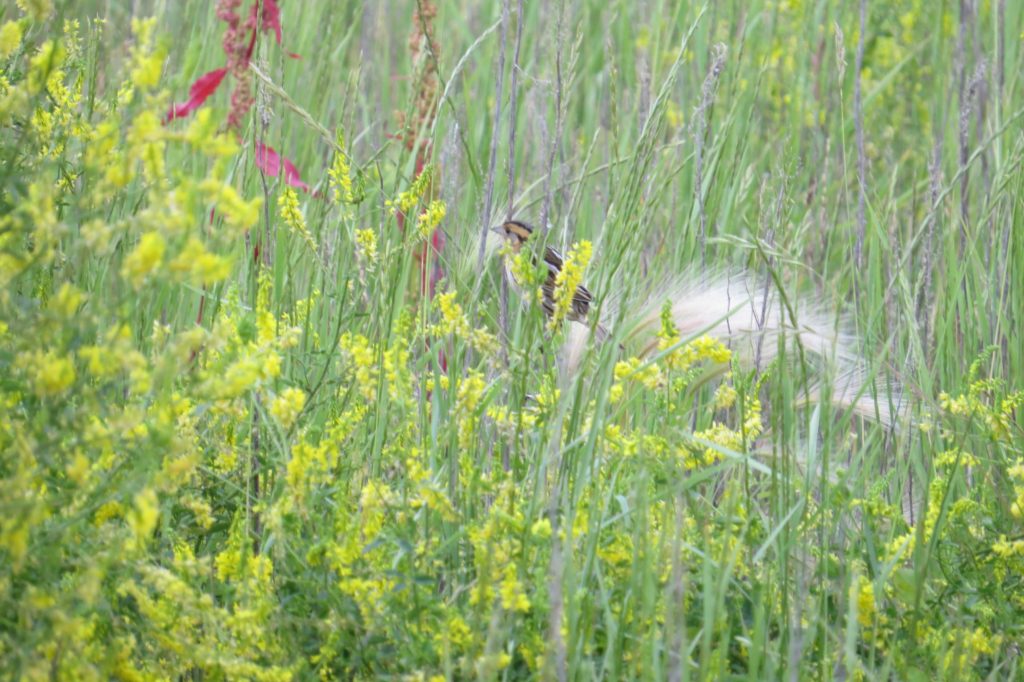 With some pishing we were able to get them to pop up for some great looks at these skulkers.
With some pishing we were able to get them to pop up for some great looks at these skulkers.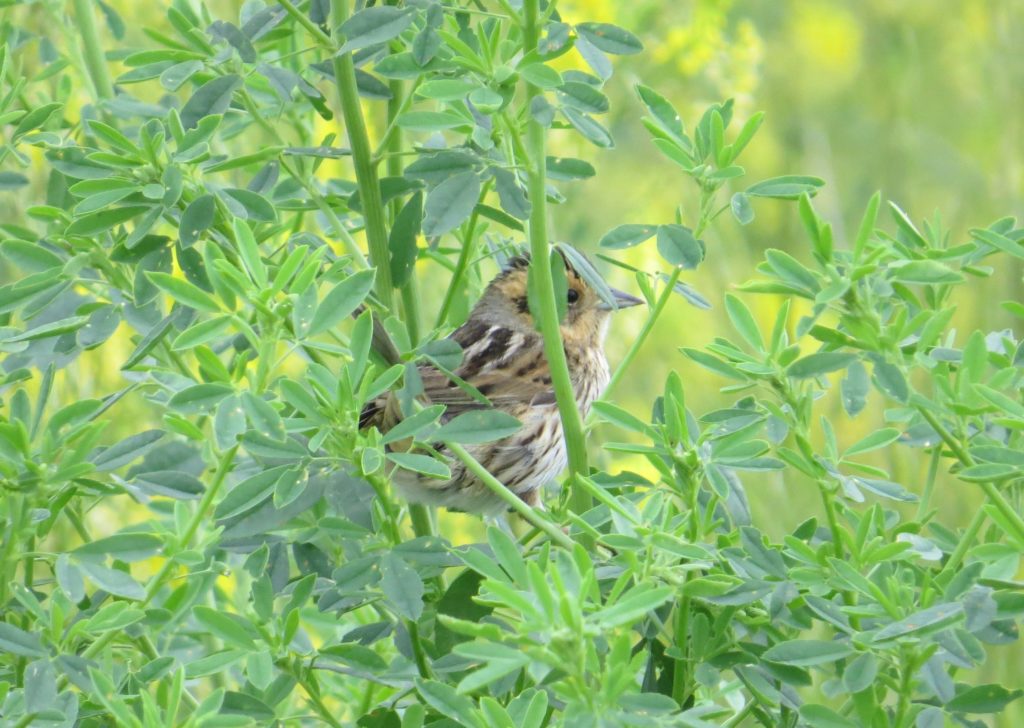
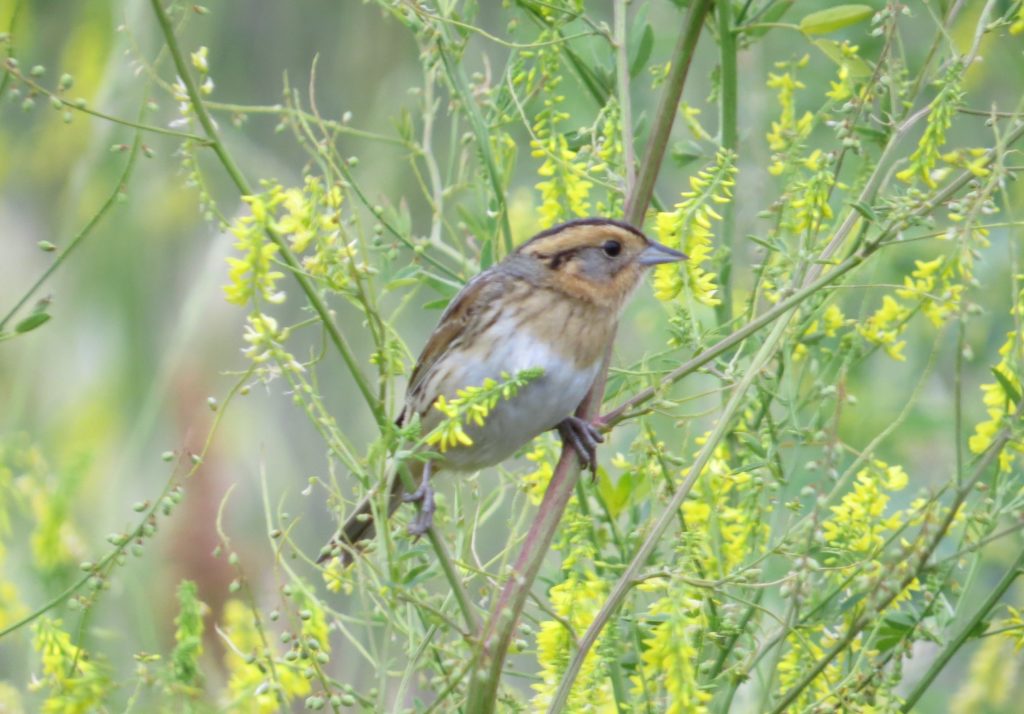 Steve and I followed these birds around for a bit, thoroughly soaking up the experience. I don’t think either of us ever expected to lifer on this bird with such good looks. We certainly didn’t expect to get this lifer in Grant County. This nighttime singer is often a heard-only bird that people trek to middle of nowhere (McGregor) to find in the middle of the night. We were stupefied. Talking it over on the ride home, we concluded that the Nelson’s Sparrow lifer experience topped the King Rails even though the Sparrow is a summer resident in our state. More than once I have been surprised by how much of an impact a Sparrow lifer has on me. A huge thanks goes out to Becca Engdahl for her find and her tips on locating it!
Steve and I followed these birds around for a bit, thoroughly soaking up the experience. I don’t think either of us ever expected to lifer on this bird with such good looks. We certainly didn’t expect to get this lifer in Grant County. This nighttime singer is often a heard-only bird that people trek to middle of nowhere (McGregor) to find in the middle of the night. We were stupefied. Talking it over on the ride home, we concluded that the Nelson’s Sparrow lifer experience topped the King Rails even though the Sparrow is a summer resident in our state. More than once I have been surprised by how much of an impact a Sparrow lifer has on me. A huge thanks goes out to Becca Engdahl for her find and her tips on locating it!
The reports out of North Ottawa definitely dried up in July. That was okay with me because I, along with many others, were spoiled rotten by the place. Additionally, I was okay with not having to run up to Grant County again because I had been working hard on achieving a birding goal much closer to home, a goal that has since been achieved and will be the highlight of the next post.
Island Life–The Boys of Summer
Every other summer my side of the family holds a small reunion of sorts on Madeline Island, the flagship island of Wisconsin’s Apostle Islands on the south shore of Lake Superior. It is a beautiful place to rest, reunite, and play–a place where boys can be boys.
 Of course, no boys take this more seriously than the male Warblers of the island. With nearly twenty different species being present on the island, one cannot escape these singing sensations as they belt out their territorial songs telling rival males and the whole world that this is their house.
Of course, no boys take this more seriously than the male Warblers of the island. With nearly twenty different species being present on the island, one cannot escape these singing sensations as they belt out their territorial songs telling rival males and the whole world that this is their house.
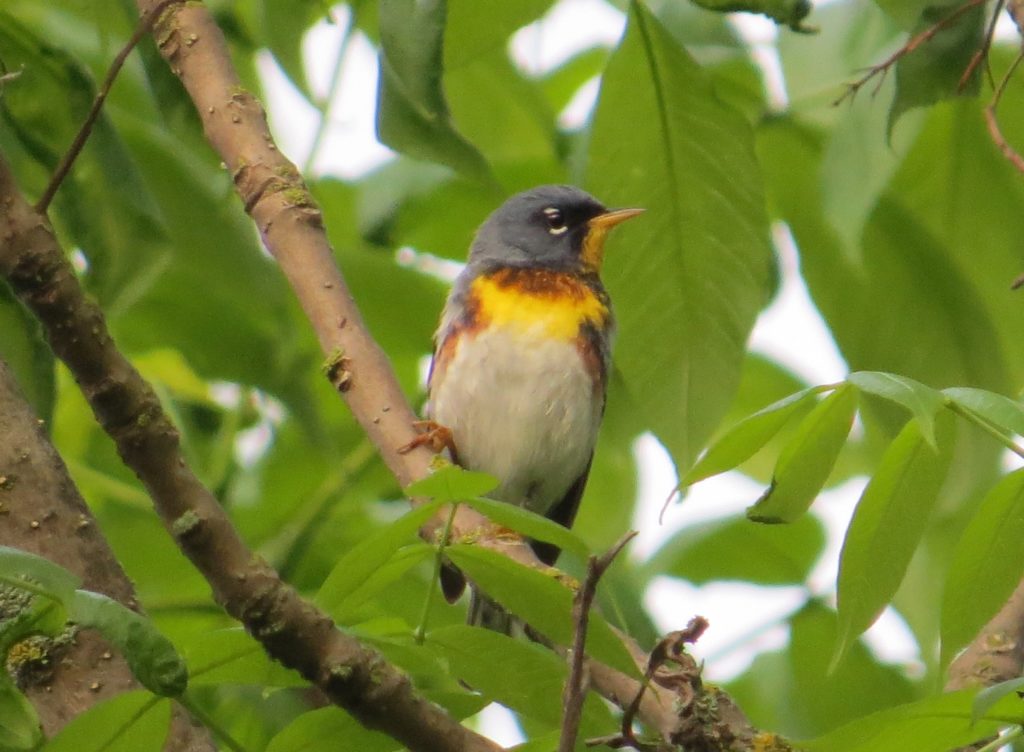
Northern Parula
The Warblers are so thick on Madeline Island that one may escape a particular Warbler’s territory only to immediately land in another’s. Or sometimes, several different species all have territories in the same spot, tolerating each other’s different songs but ready to battle any male of their same species. While I enjoyed a great number of Warbler species, this was not a birding trip and so the camera was rarely raised. Besides, none were new for me. One Warbler that always feels new, that I feel compelled to photograph every time, is the Blackburnian Warbler. Such a looker! And he knows it.
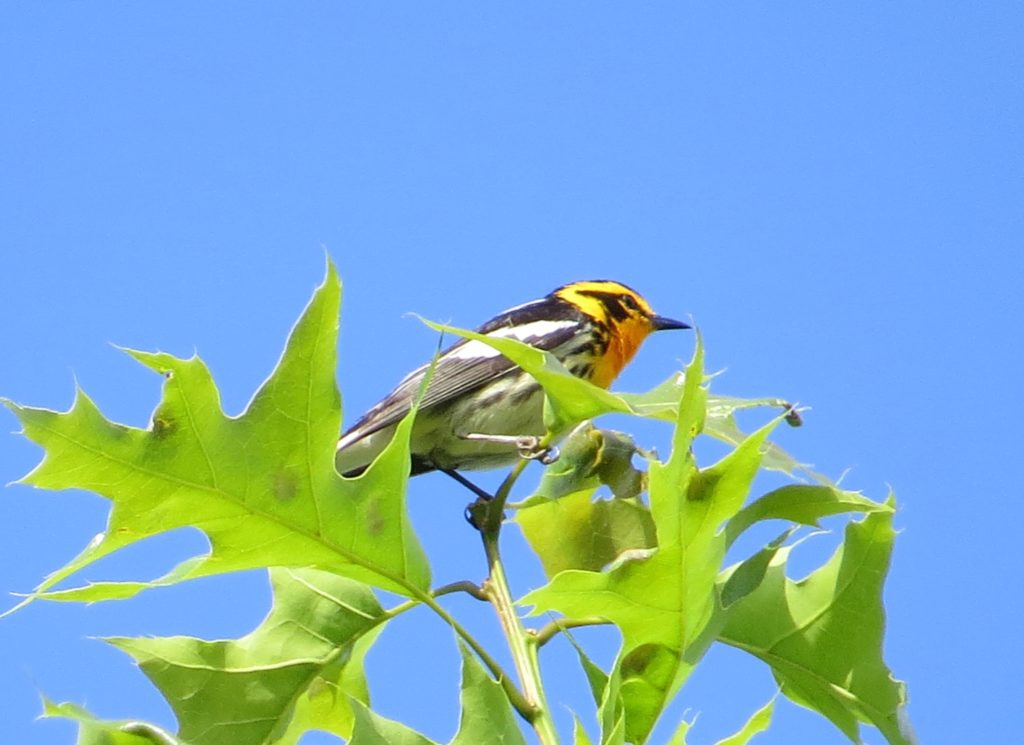 Photographing Warblers in their natural habitat is the best. Here this Blackburnian is posing where he is most comfortable–atop a Black Spruce in a decent-sized (and only) bog on the island.
Photographing Warblers in their natural habitat is the best. Here this Blackburnian is posing where he is most comfortable–atop a Black Spruce in a decent-sized (and only) bog on the island.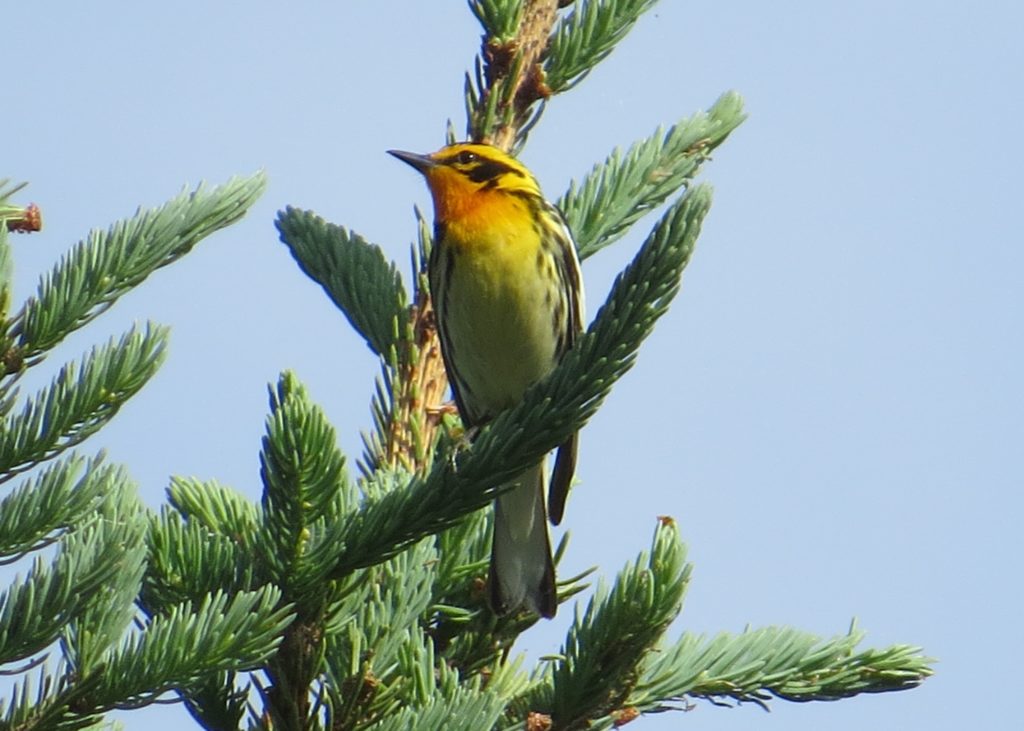
Though I did not photograph all the Warbers I encountered, I detected many different species:
- Yellow-rumped Warbler
- Black-and-white Warbler
- Northern Parula
- Blackburnian Warbler
- Pine Warbler
- Yellow Warbler
- Common Warbler
- Cape May Warbler
- Black-throated Green Warbler
- Ovenbird
- Common Yellowthroat
- American Redstart
- Mourning Warbler
- Chestnut-sided Warbler
- Nashville Warbler
Naturally I have saved the best for last. This was my big Madeline Island souvenir, a male Black-throated Blue Warbler.
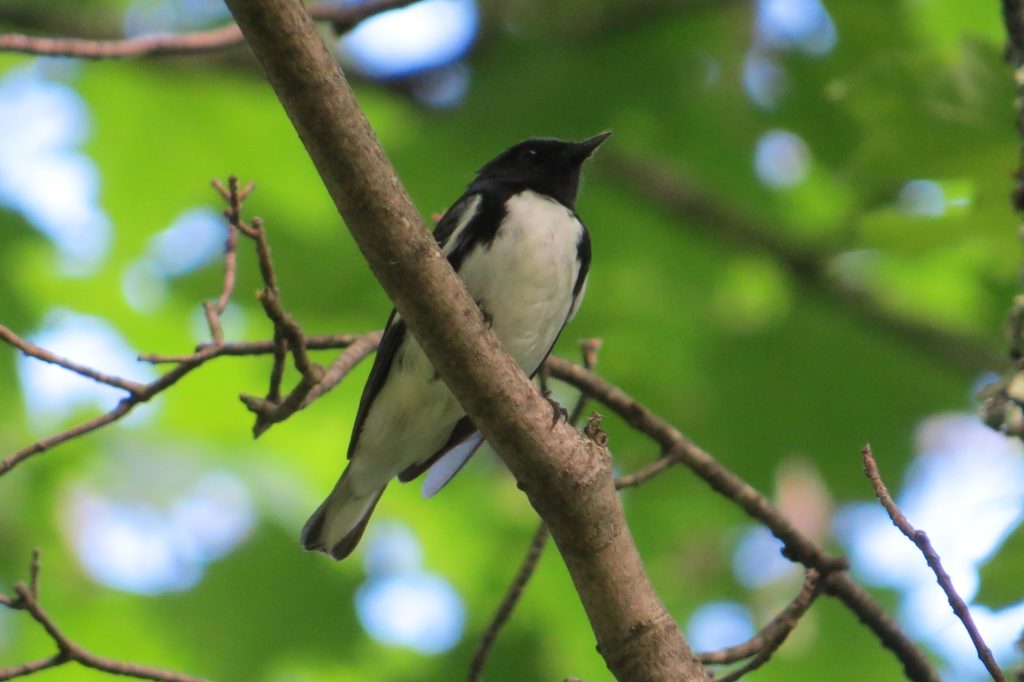
Two years ago I searched for this species when I saw appropriate habitat of mature maple forests on the eastern end of the 14-mile long island. Trying that same area again this year, I stopped at a spot along North Shore Road that looked good–a deep ravine in the Maple/Hemlock woods which created a relatively open understory that BTBWs like. Immediately I was rewarded that sweet zoo-zoo-zoo-zoo-zoo-ZEE! Making this sighting even sweeter was that I had been participating in Wisconsin’s Breeding Bird Atlas project, and this bird was right in the corner of one of the priority blocks on the underbirded island. BTBW is a very good atlas bird for Wisconsin.
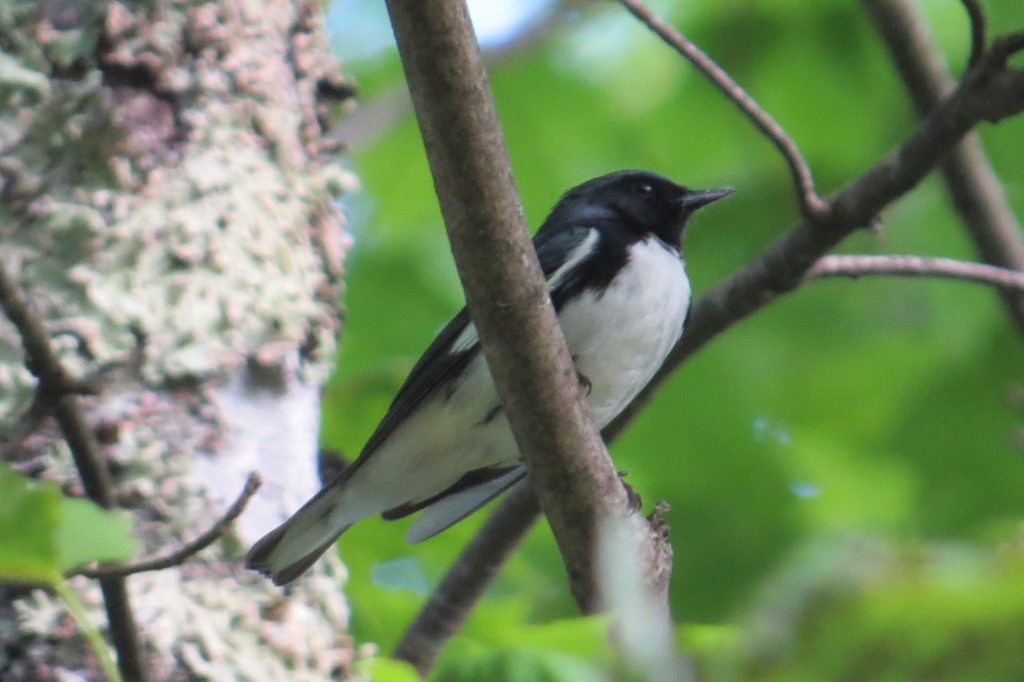
As fun as the Warblers were, they were merely a distraction to bide my time while I anxiously waited to get back to the mainland in Minnesota where all kinds of birds–life birds–were popping up. Stay tuned for the fully-loaded lifer post next.
